Tourist information Crete: Crete is the southernmost and largest island in Greece and has a Mediterranean climate. Crete is large enough that everyone can find something interesting to do. The island has four regional units: Chania, Rethymnon, Heraklion and Lassithi. The westernmost region is Chania. A beautiful region with the most known places to visit: Samaria gorge, the town of Chania and the stunning beaches Balos and Elafonisi. Travelling eastwards follows the region of Rethymnon, with certainly Rethymnon city being worth a visit. Especially the picturesque Venetian harbour and the old Turkish part of the town attract most visitors.
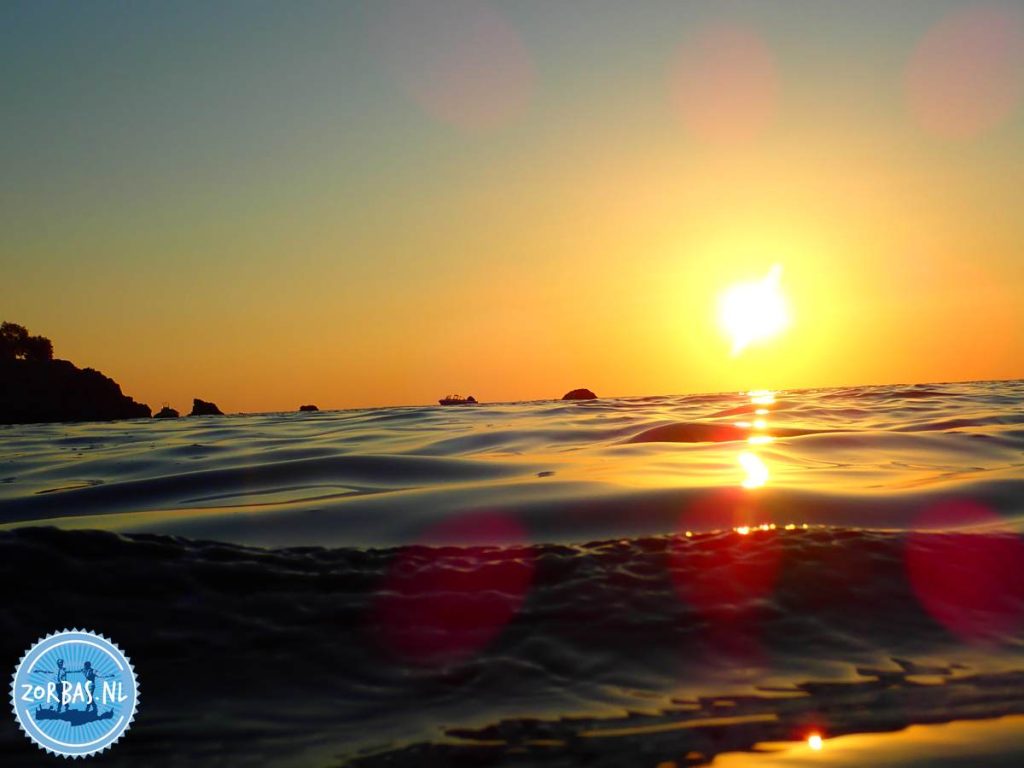
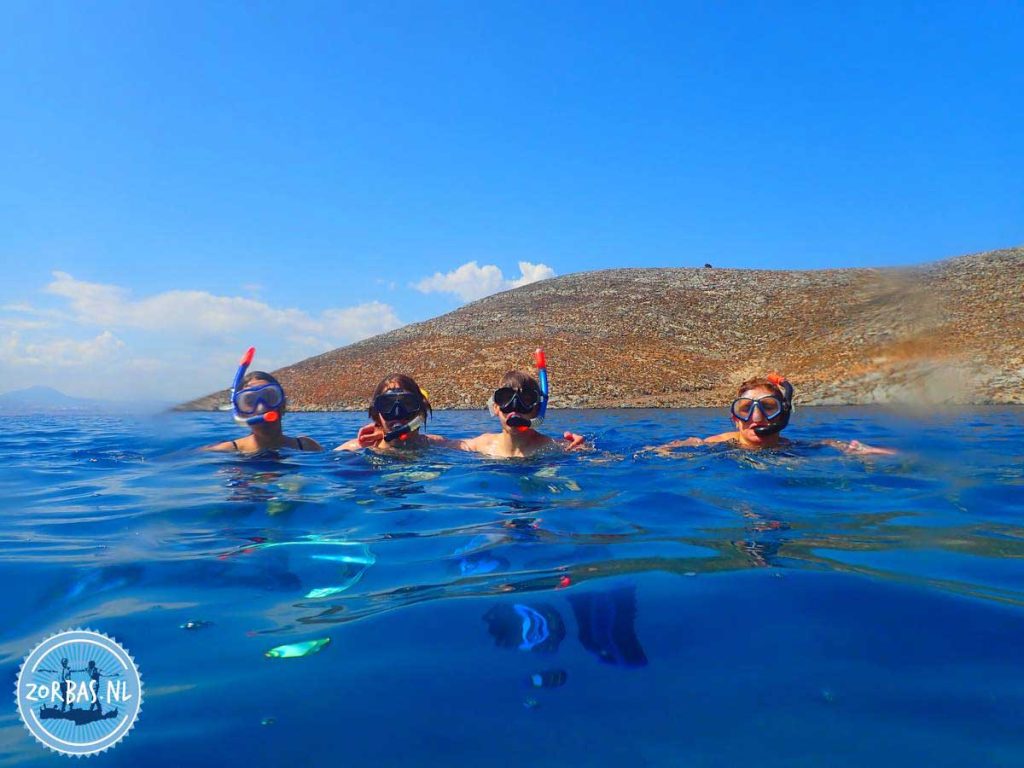
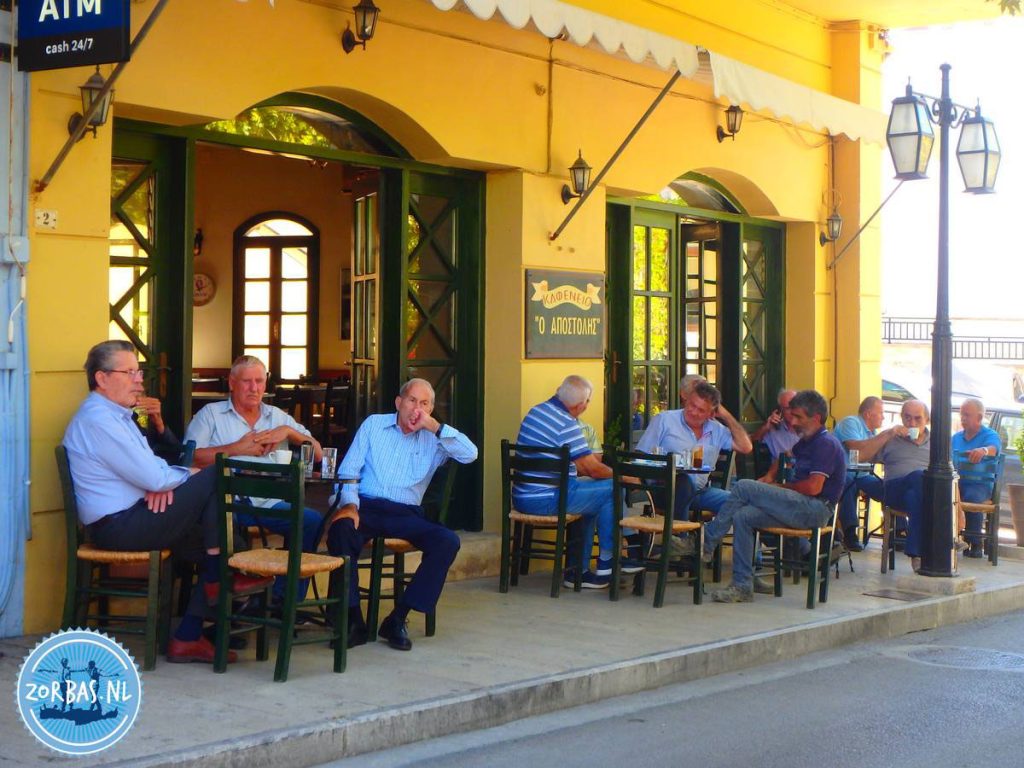
Then follows the Heraklion region with the city of Heraklion, which is also the capital of Crete. The excavated palace of Knossos is just outside the city. On the north coast of this province are the most tourist resorts. Easternmost is the region of Lasithi with its capital Agios Nikolaos. On this side of the island are Spinalonga, the former leper island and palm beach Vai surely the most famous sights to visit. In general the roads are very good on Crete and from west to east is a long highway (E75). In the towns of Chania and Heraklion is an international airport.
Tourist information Crete – General information about Crete
General information Crete Greece: Crete has a length of 260 kilometres and is 60 kilometres on its widest point and 12 kilometres on its narrowest point (at Ierapetra). Crete covers a total area of 8336 square meters. Crete has a Mediterranean climate: hot, dry summers and a wet winter with often sunny weather, a kind of northern European summer. The coastline of Crete is 1050 kilometres (including all the bays). The highest mountain on Crete is Mount Ida in the Psiloritis mountains. Crete has of three large mountains ranges: Psiloritis has a height of 2456 metres, Lefka Ori 2452 meters and the Oros Dikti is 2148 meters high. Apart from these mountains Crete has many more smaller mountain ranges. On the island live around 623.000 inhabitants.
Economy of Crete: Crete is an important agricultural area for Greece. Nearly 50 % of the island consists of harvesting olives. Fifteen percent consists of the harvest of grapes. This is why the wine and raisin industry flourished. Crete exports mainly olive oil, grapes, raisins, wine and oranges. Crete has almost no other industries, except for the tourism and agricultural industry.
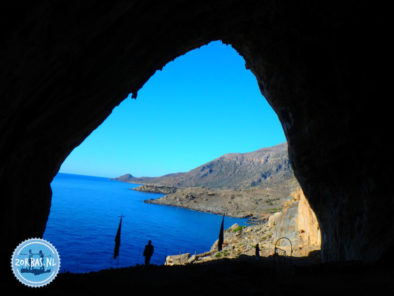
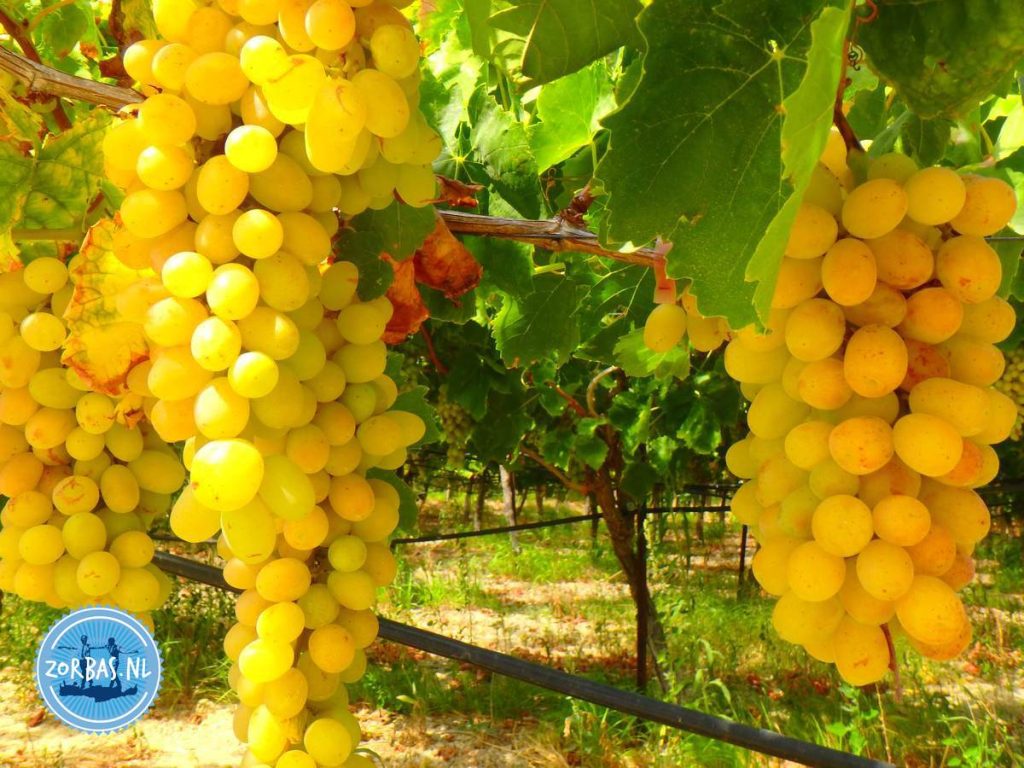
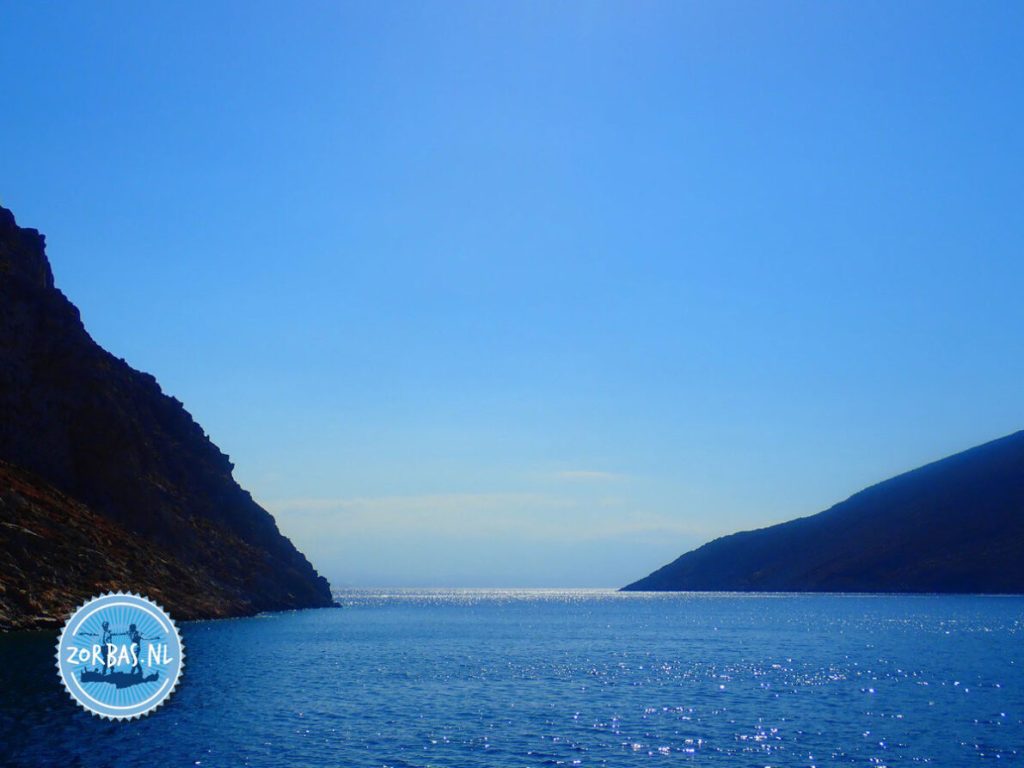
Tourist information Crete – Places that are nice to visit
Below is a small selection of places that are nice to visit on Crete (in alphabetical order):
AGIA GALINI Crete: A nice, but in the summer crowded village on the south coast of Crete. They built the village in the shape of an amphitheater at the foot of the Psiloritis Mountains. It leads to a charming, picturesque harbour, which is certainly in the evening lovely for a stroll.
AGIOS GEORGIOS Crete: Agios Georgios is a nice village on the Lassithi Plateay with a lot of old little streets. The village has a folkloristic museum. Just outside Agios Georgos is the entrance to the Limnakaros. We take you to this area during one of our jeep safaris. Don’t try to explore these roads on your own! It is a labyrinth of off roads. and the cliffs are dizzying!
Many villages are names after a saint – Agia or Agios
AGIA ROUMELI Crete: Agia Roumeli is for a lot of people the ending of the Samaria gorge (18 km) and for others the beginning of a tour to the most narrow part of the gorge (3 km). From Agia Roumeli several ferries leave to Hora Sfakion (Sfakia), to bring visitors of the Samaria gorge back to their touring buses at the end of their excursion.
In Agia Roumeli you can also have a look at the archaeological site. At the east-side of the river is the archaeological site “Tarra”. Tarra used to be centuries ago a village with its own currency. The coins had on one side a picture of a bee and on the other side a picture of a wild goat. You can still see interesting excavations from Tarra in the archaeological museum of Chania. Up from Agia Roumeli are two old Turkish fortresses, of which the first one is easy to visit. At the end of the Samaria gorge you see the old temple of Apollo Tharraeus.
The capital of Lassithi – Agios Nikolaos
AGIOS NIKOLAOS Crete: Agios Nikolaos is the capital of the Lassithi region. It is a scenic town to walk around. Limni Voulismeni is a lake in the centre of the town and next to the port. The little lake has a depth of 64 metres. According to legend, the goddess Athena has bathed in this lake. Around the lake are nice terraces for a drink or a meal and from the top you have a beautiful panoramic view. From the port of Agios Nikolaos ferries leave everyday around 10.00 hours to the island of Spinalonga.
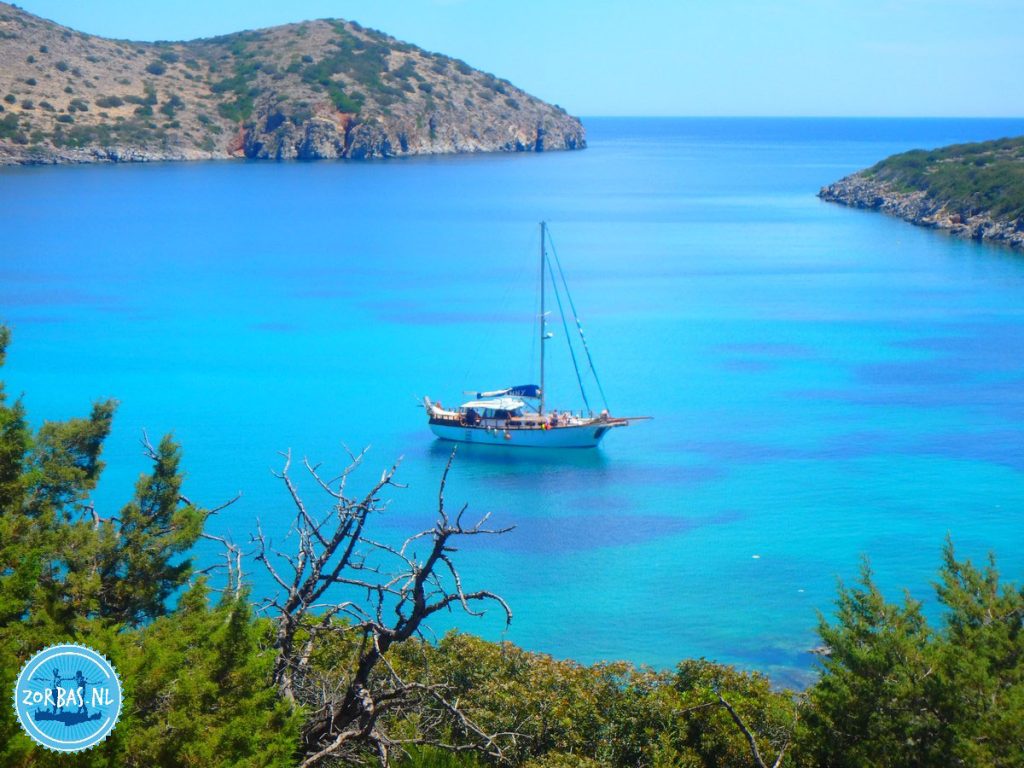
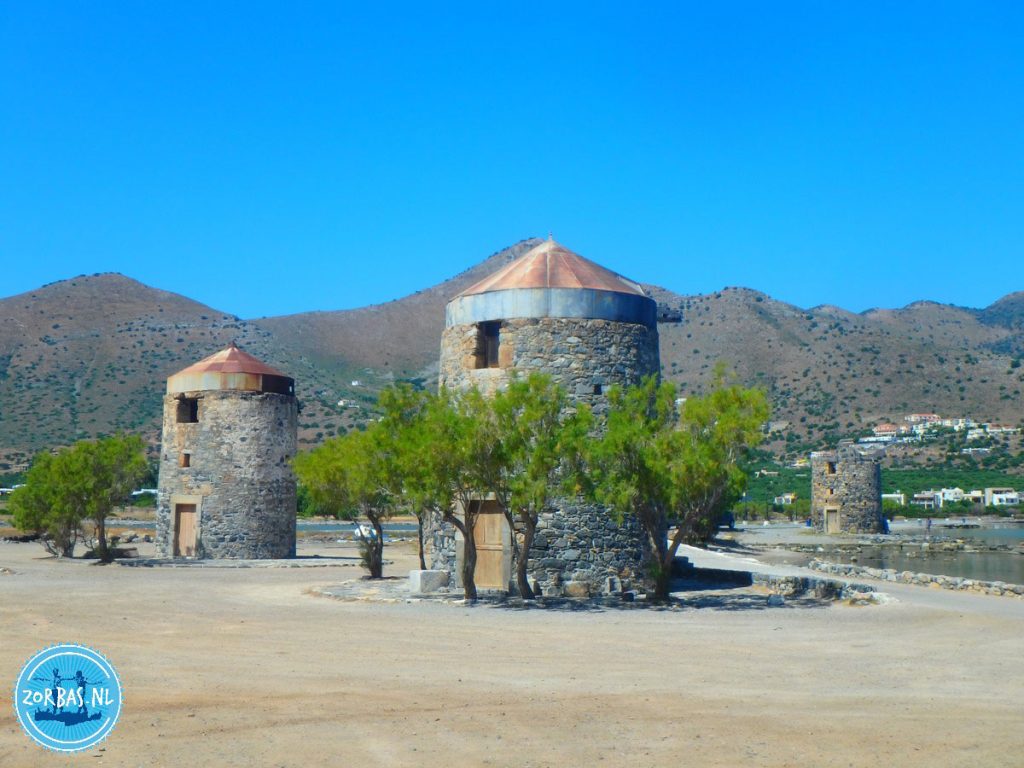
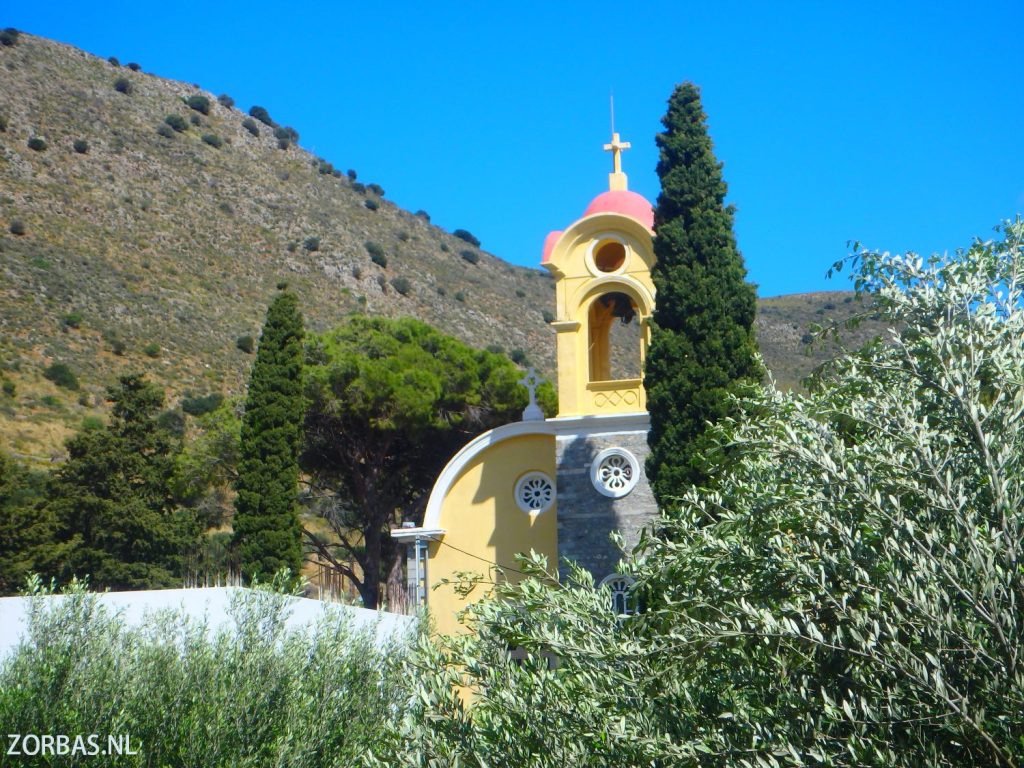
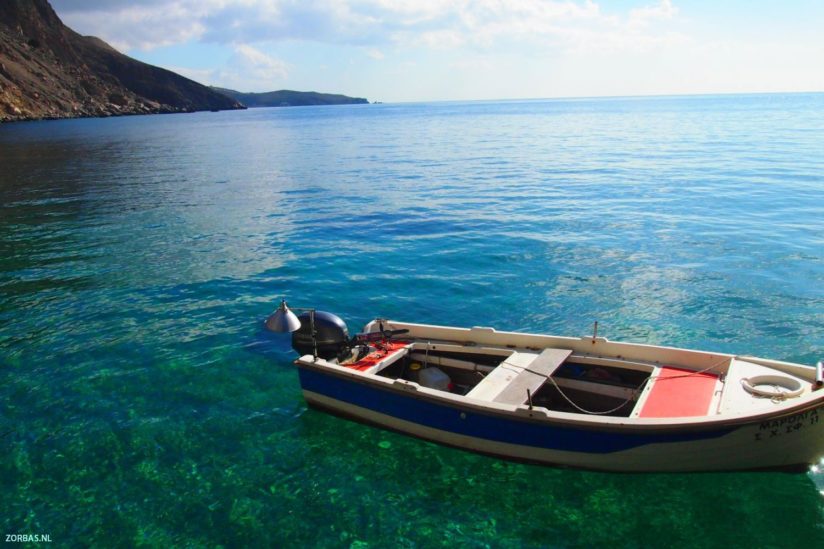
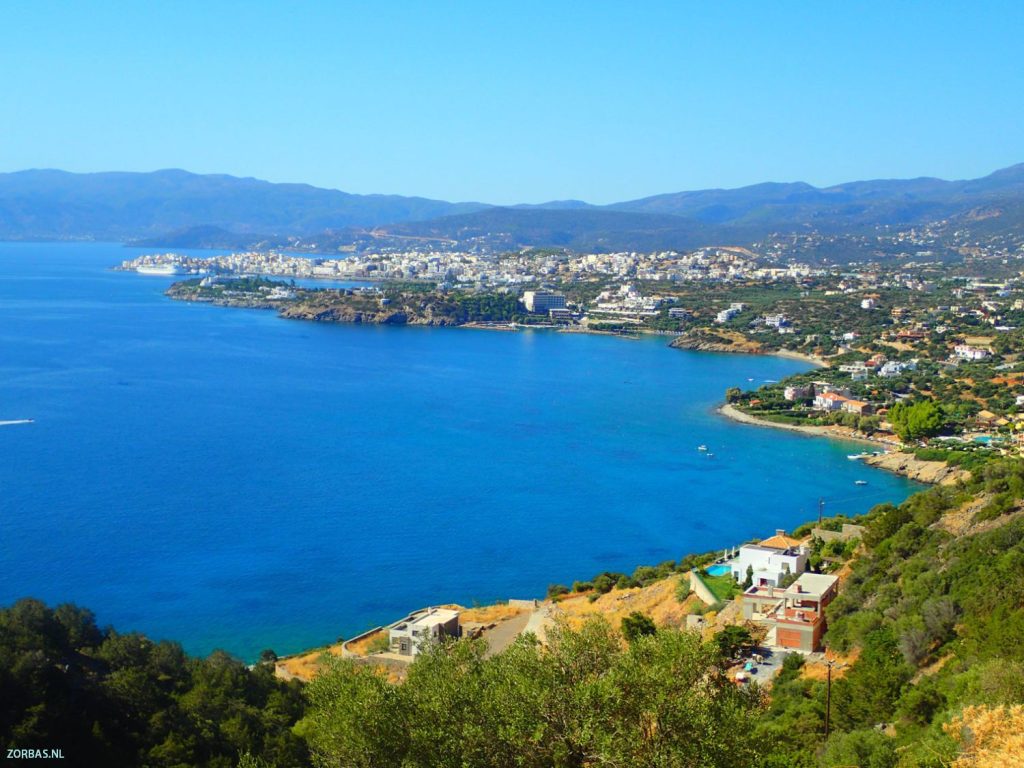
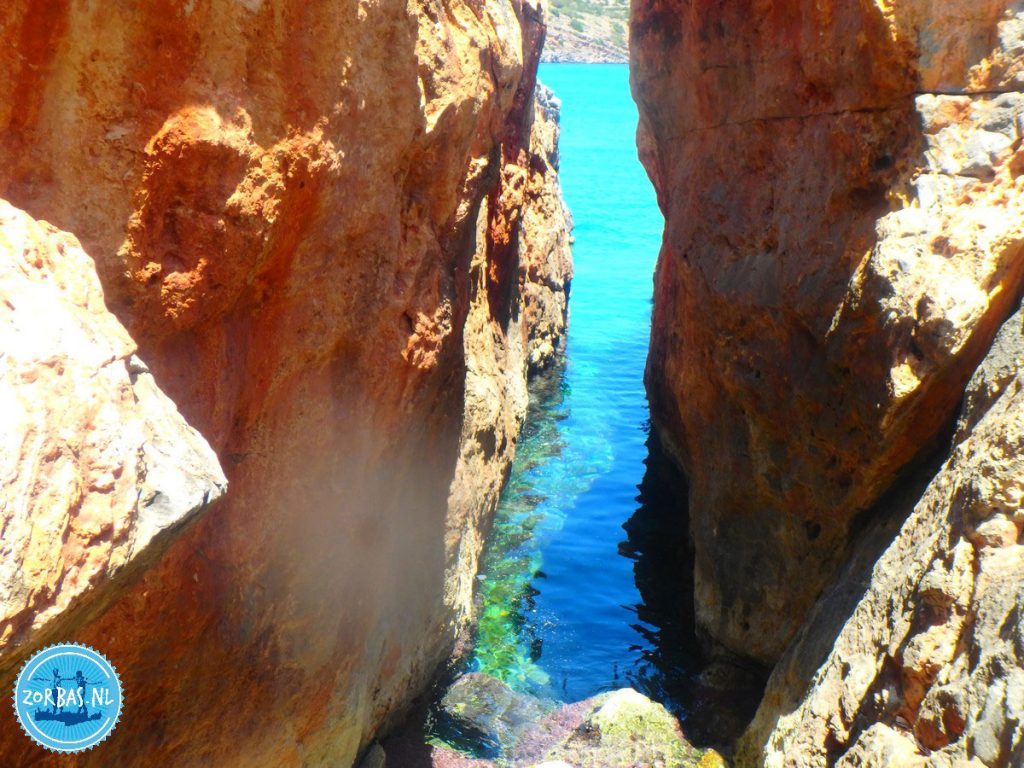
AKROTIRI Crete: Akrotiri is the peninsula where also the airport of Chania is located. This will not be much of a disturbance. The town of Souda lays in the bay of Akrotiri. On Akrotiri there are many old monasteries that are definitely worth a visit. We really recommend you visit the monastery of Agia Triada. Two Venetian monks built this monastery in the 17th century, who dedicated themselves to the Orthodox religion. Until about 50 years ago this monastery was a school where only education in the religion was given.
Small villages that are worth a visit
ANOGIA Crete: In the village Anogia live many shepherds. Here they make the famous Cretan cheese and also other traditions are kept here highly valued. For this reason many tourists like to visit this village. It is easy to identify residents from Anogia by their clothing, especially the men with their black leather boots and big mustache. Many Greek dancers and “Lira” players originate from here. The Lira is a kind of violin with three strings. The village lies at the northern foot of Mount Ida at an altitude of 780 metres.
ANO VIANNOS Crete: Ano Viannos is a pleasant village, actually it is a narrow street. The small streets next to the main street are really worth a visit. In the center of the village you find nice terraces around a very big old plane tree.
Arakadi Monastery
ARKADI Crete: Arkadi is an important sanctuary for Crete. Priests, women and children choose to sacrifice themselves here in 1866. When the Turkish army had reached the entrance of the monastery, they sacrificed themselves by letting gunpowder explode. Arkadia served in the time of the Turkish occupation as an illegal school for Cretan culture and religion.
BALOS Crete: This could very well be the most beautiful beach of the Mediterranean Sea. In this area live the loggerhead (Caretta Caretta) sea turtles. Balos is a lagoon on the peninsula of Gramvousa. The lagoon of Balos has an exotic white sandy beach and turquoise waters.
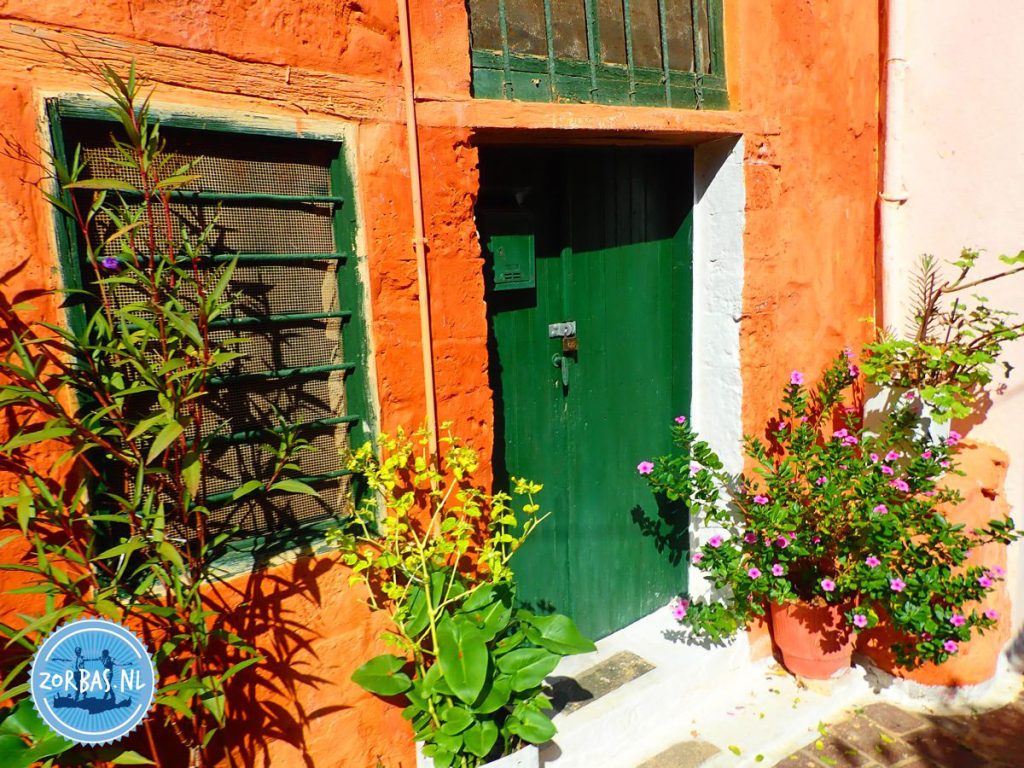
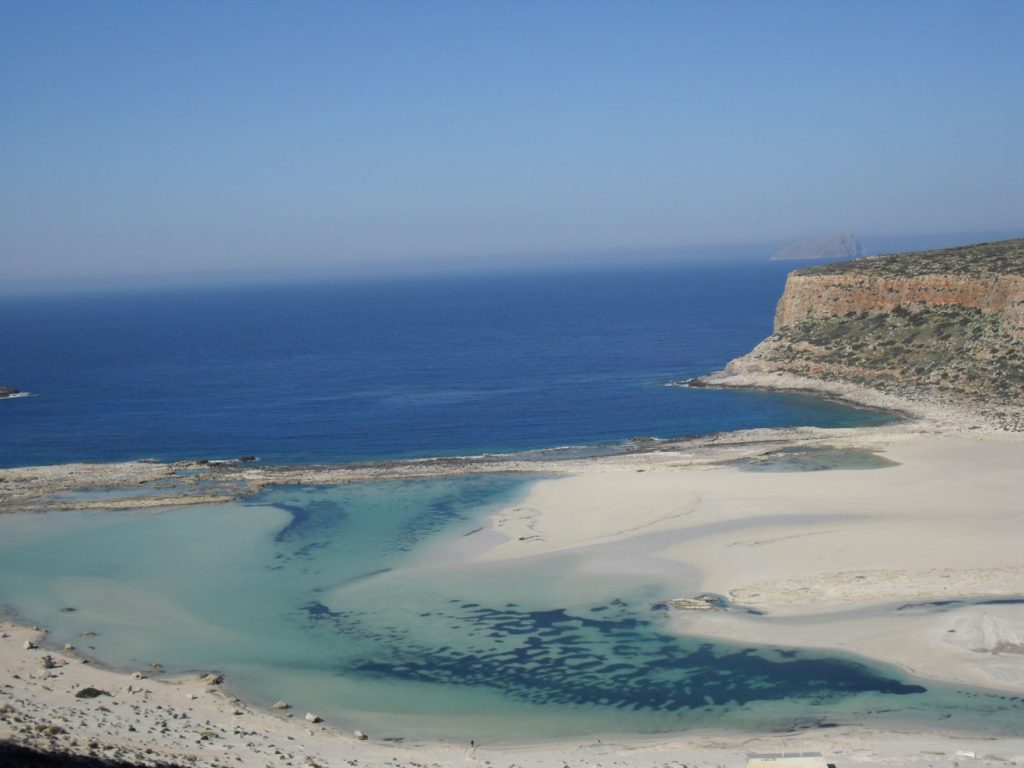
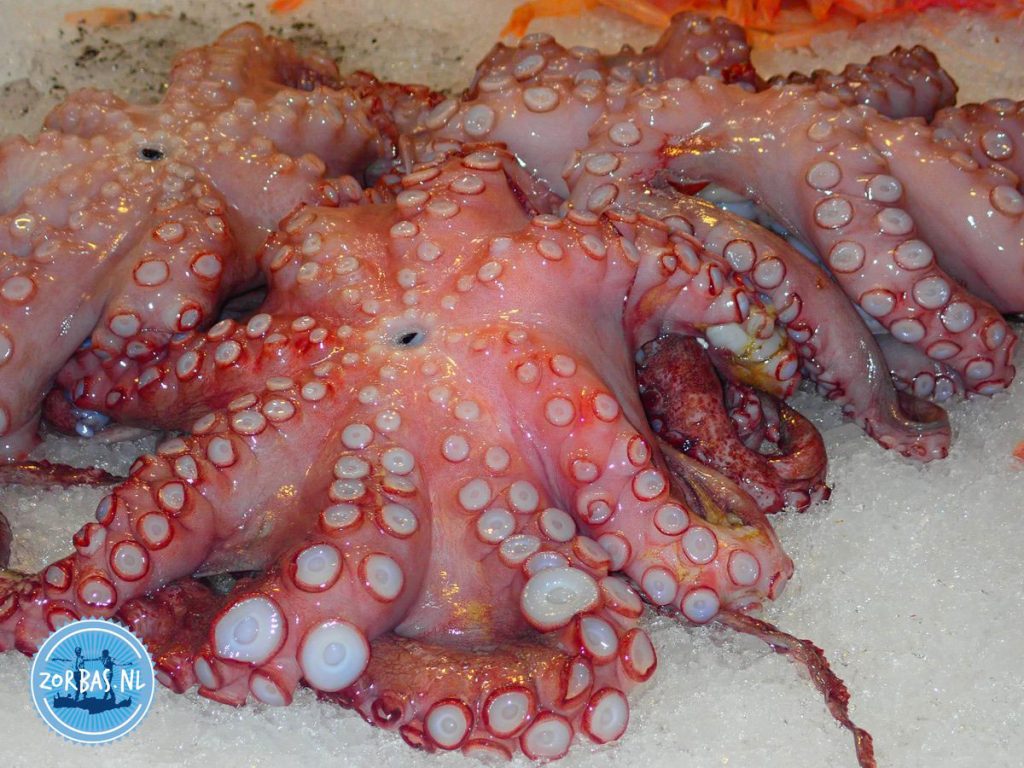
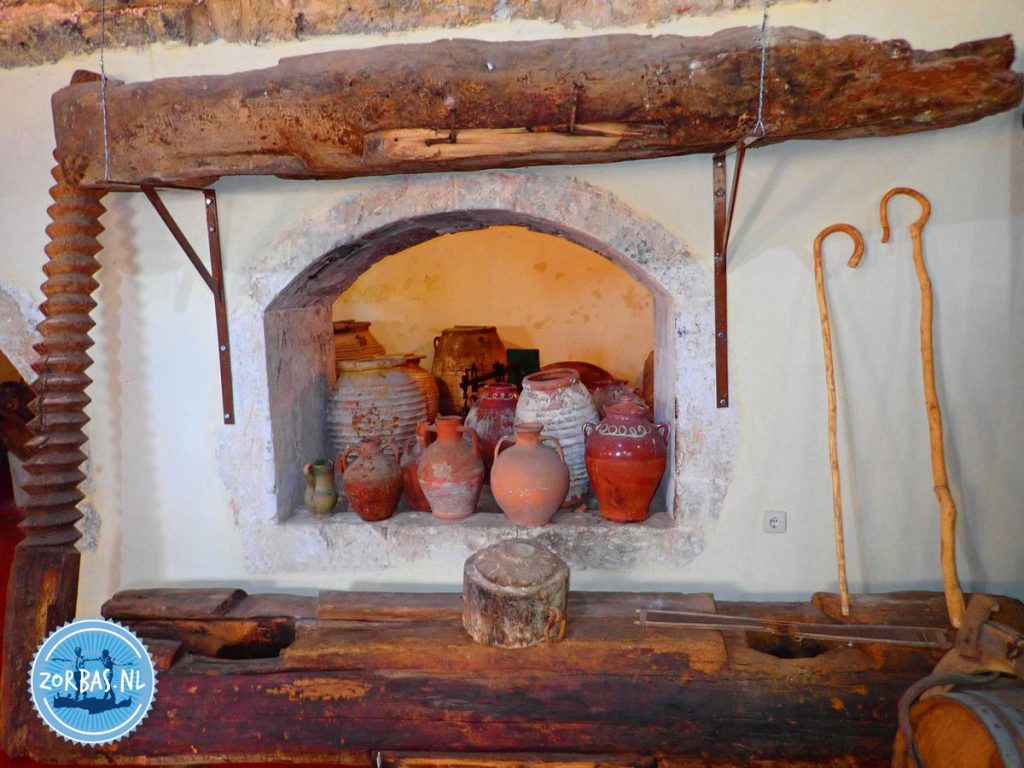
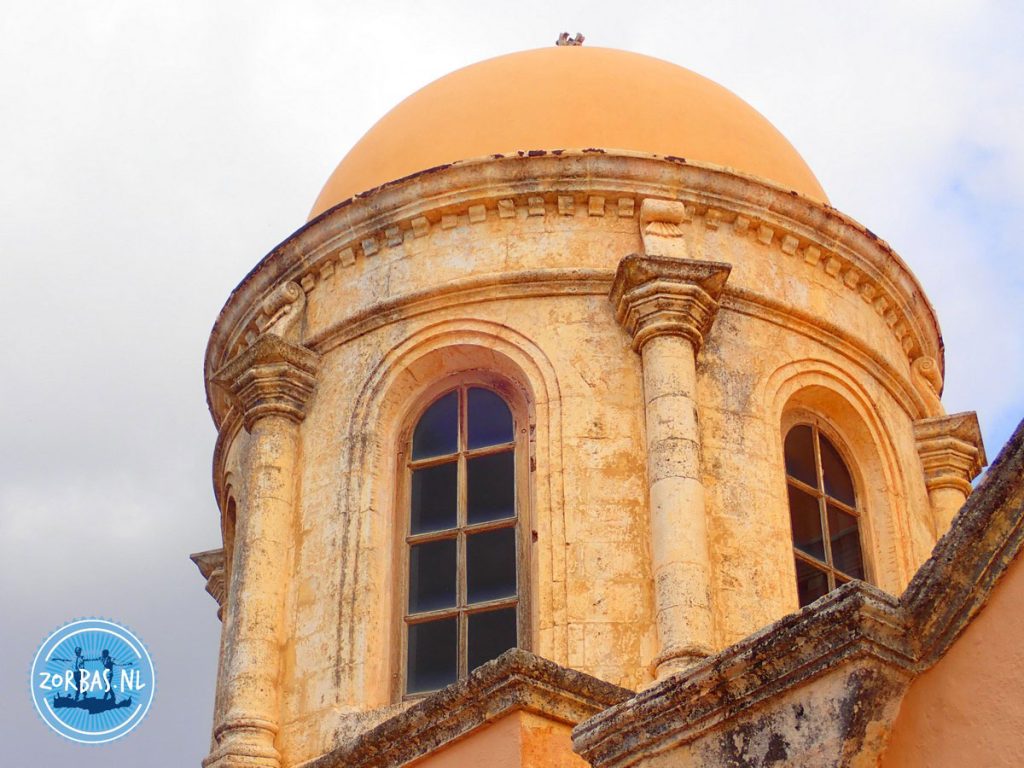
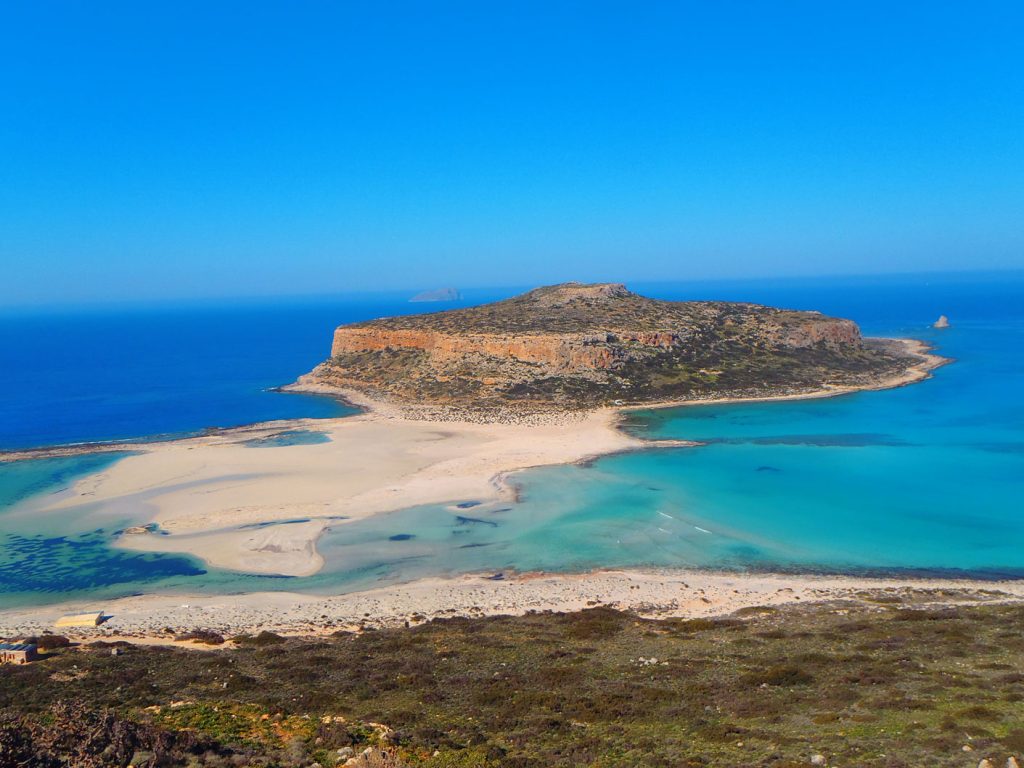
The old capital of Crete – Chania
CHANIA Crete: The city of Chania is located 145 kilometres to the west from Heraklion. The town has 60.000 inhabitants and is a beautiful town to visit. In the old days Chania was the capital of Crete, today Heraklion is the capital. It is mainly the Venetian and Turkish elements that decorate the city and give it a nice atmosphere. The old center of the town has Venetian, Turkish and Jewish neighborhoods, each with their own character. The Venetian harbour with the lighthouse in the Firkas fortress and the nice small terraces around it, is a great place to visit in the afternoon and evening. All the ancient Venetian houses around the old harbour have nowadays been renovated.
There are more interesting sights to visit in Chania, for example: the archaeological museum, the maritime museum, the Market Hall and the Minoan Villa. You can also visit some beautiful churches in Chania, like the Agios Nikolaos church, the cathedral and the mosque of Hassan Pasja.
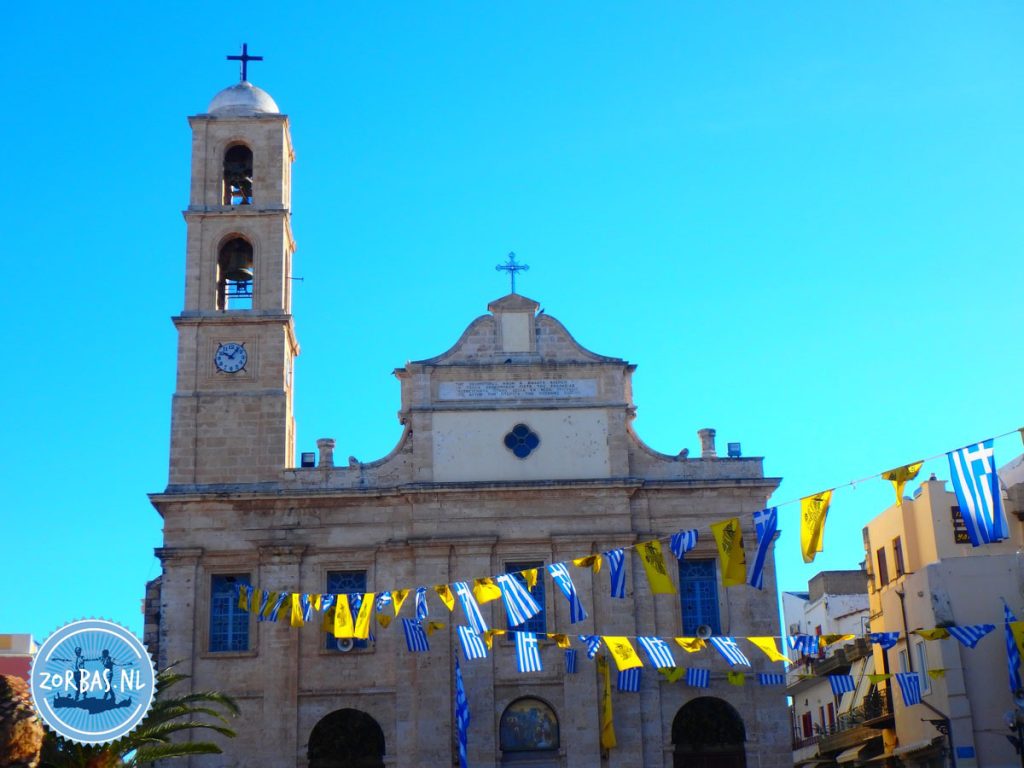
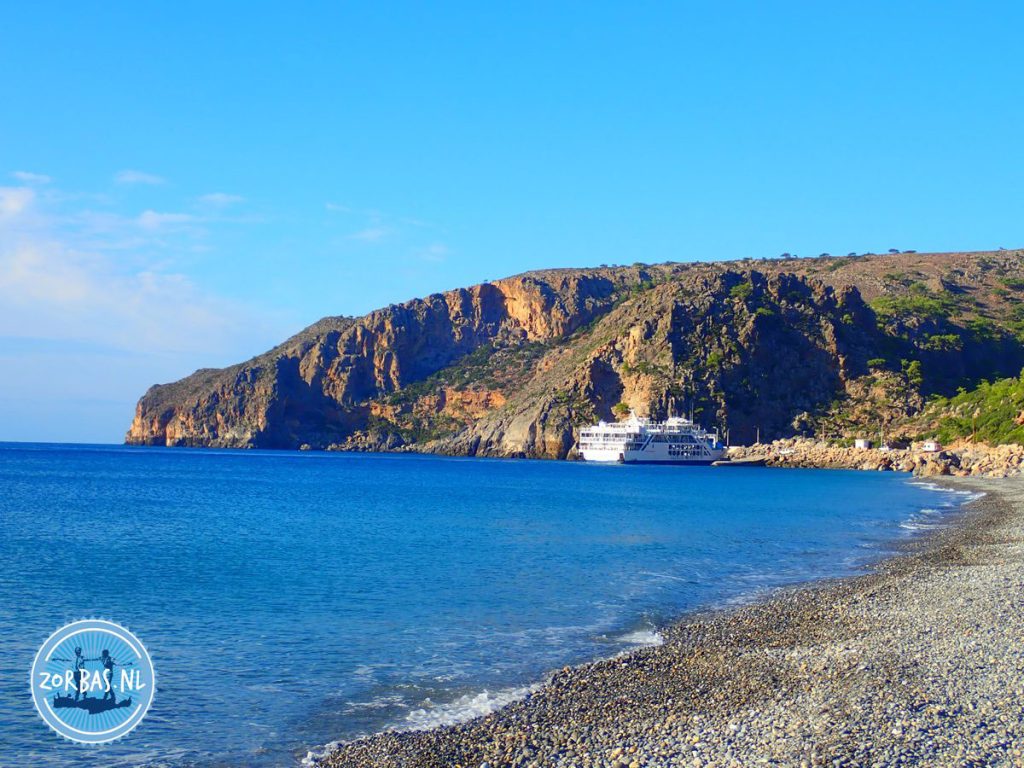
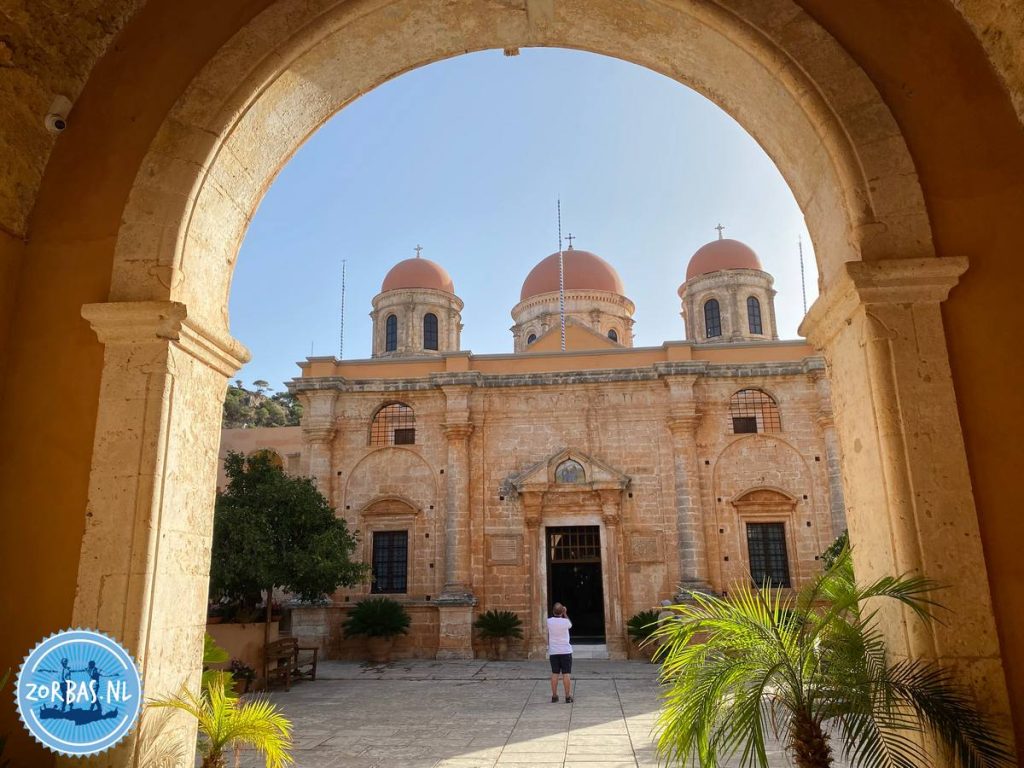
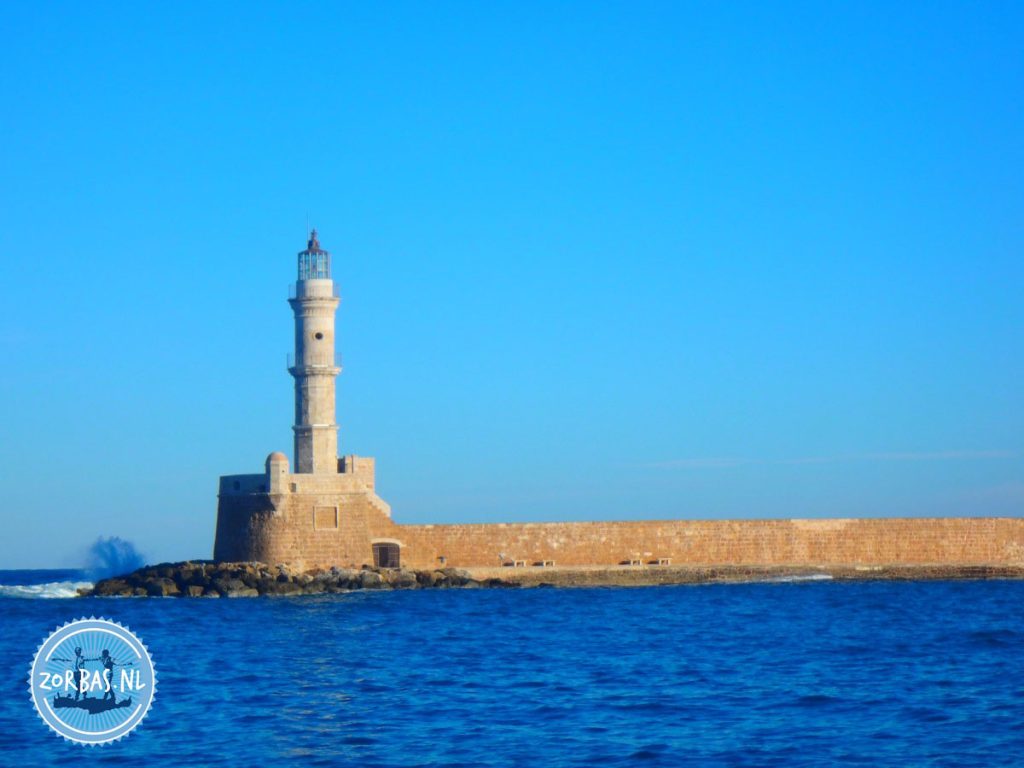
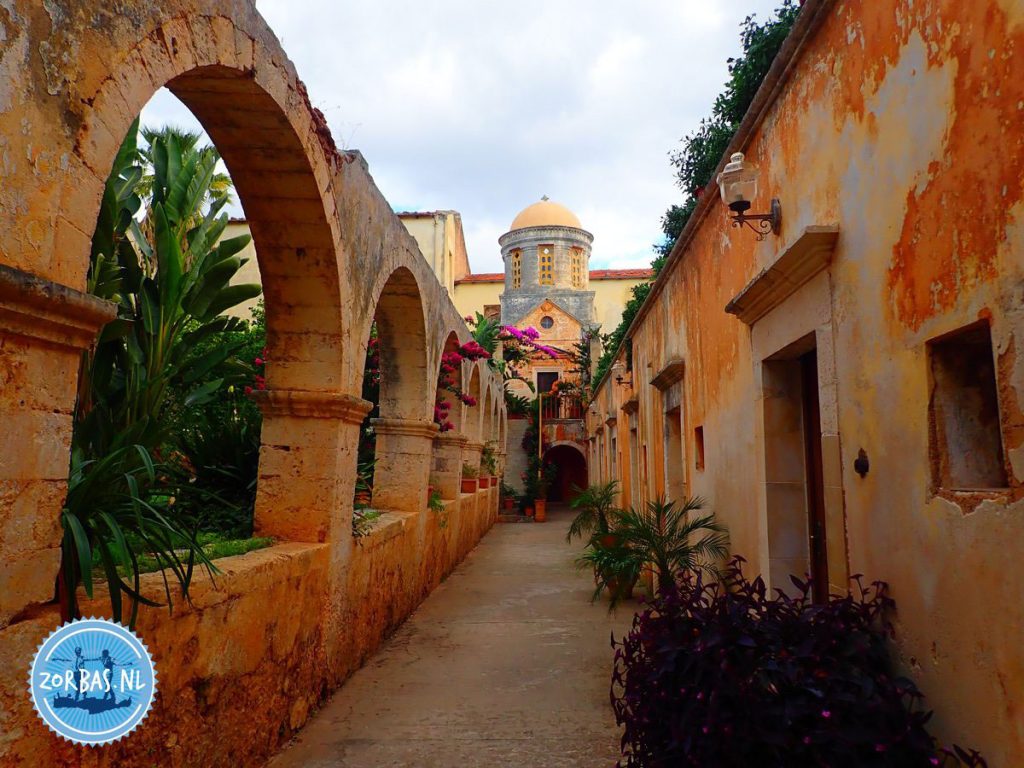
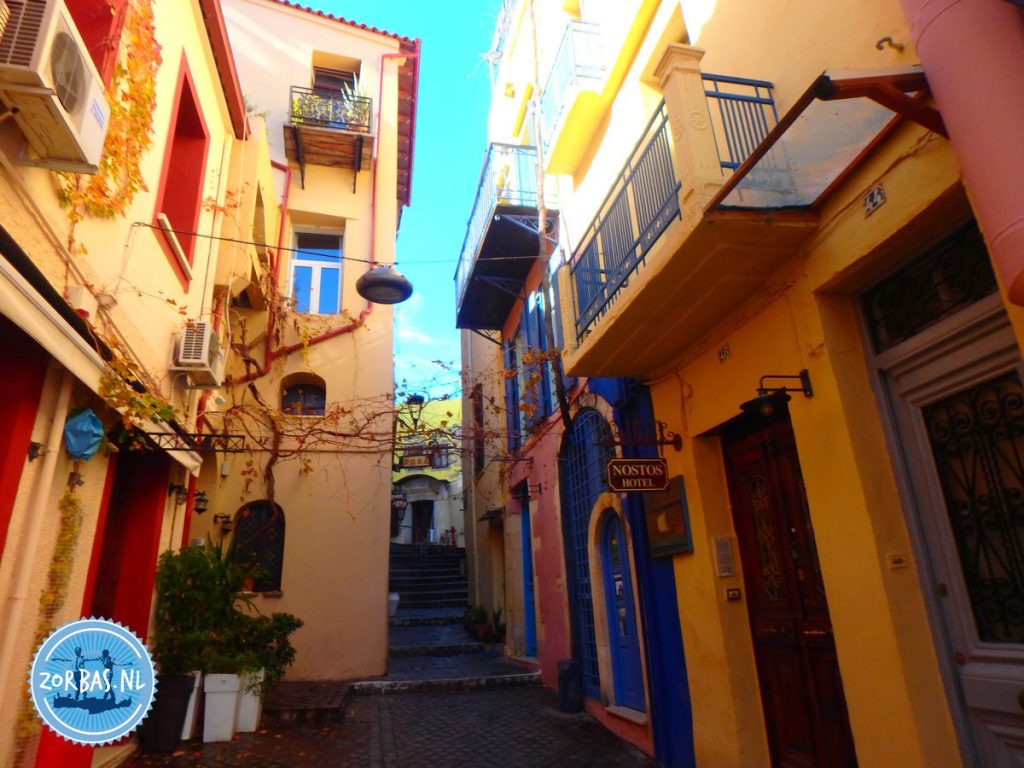
Inhabited islands – Dia and Chrissi
CHRISSI Crete: Chrissi is a beautiful island, where you can walk around or enjoy relaxing on the beach. It is an island with marvelous sandy beaches and is a paradise for snorkelers. It is an island with beautiful sandy beaches and is a paradise for snorkelers. Chrissi owes its name (Golden) to the fine golden sand that is everywhere on the island. The sea around the island has several shades of blue. You leave from Ierapetra by boat to this fantastic island. The boat trip is about 1 hour (the boat leaves at 10.00 hours from Ierapetra). You arrive around 11.00 hours at Chrissi and the boat leaves again at 16.00 hours back to Ierapetra.
DIA Crete: Dia is an inhabited island off the coast of Kokkini Hani and hence perfectly visible from our accommodation. Dia is a nature reserve for the Kri Kri goats. There are almost daily boats going to this island. Around the island Dia there are quaint little bays where you can swim and snorkel.
DIKTI CAVE Crete: At the Lassithi Plateau and the village Psychro is the beautiful Dikti cave, of which people say it is the birthplace of Zeus. According to the myth Zeus was born in this beautiful cave and raised by nymphs. The trip to the cave takes about 25 minutes if you go by foot, but you can also take a donkey. In the cave you descend 70 meters down (bring a flashlight!).
DIONISSI Crete: Dionissi is a gathering place for birds that migrate to Africa for the winter. It is a small group of islands off the coast of Sitia.
Coastal areas – beaches and villages
ELAFONISI Crete: This is a wonderful white sandy beach with at some parts a pink colour because of the millions of crushed shells. Elafonisi is a protected nature area. In the summer it does get busy here, but during the low season it is really lovely to be here. When you go there in the summer, it is still possible to find peace and quietness, away from the many sun beds; just wade through the shallow water to the little island across. The water is azure blue, which give you a magnificent panoramic view!
ELOUNDA Crete: Elounda is a tourist destination and originally a fishing village. In the summer boats leave several times a day from here to the island of Spinalonga. Off the coast is located the sunken city of Olous, around 200 BC. an important port city. Because of the change of the seawater level the houses disappeared under water. In the 70s, the TV series “Who pays the ferryman” was also recorded here. Because of the TV series Elounda got a lot of publicity in those years and actually because of that also Crete.
Tourist information Crete – historical places
FESTOS (PHAISTOS) Crete: Sixty kilometres south from Heraklion are the excavations of the Minoan palace Phaistos(2200-1700 BC). Here they found the famous disk of Phaistos, which has never been deciphered. The disk of Phaistos is often displayed as a symbol of Crete.
FODELE Crete: In Fodele the famous painter “El Greco” was born. You can visit the “El Greco” museum in Fodele. On the main street you will find pleasant little terraces and old Greek ladies will sell their handmade cloths here.
FOURFARAS Crete: Fourfaras is a village in the region of Rethymnon and is the starting point for hikes in and around the Psiloritis mountain. At Fourfaras also runs a part of the E4 walking path. There is also a church with 14th century remains of frescoes.
More nice places and islands to visit
FRANGOKASTELLO Crete: Frangokastello is a fortress from the time of the Venetians and is located on the southwest coast of Crete. They built the fortress in 1371 and it was repeatedly the scene of bloody battles. The seaside location is beautiful. From the beach you will see the fortress. It is possible to visit the fortress.
GAVDOS Crete: Gavdos is a small island about 50 kilometres off the coast of Paleochora in South West Crete. Gavdos is the southernmost point of Greece. There are daily boats going to Gavdos. The island has about 150 residents. It is well worth it to take a look here!
GONIAS MARIA Crete: Gonias Maria is a monastery in the southeast of the peninsula Rodopos. The monastery was first built in the 9th century but rebuilt after being destroyed around 1620. The Venetian influences are still clearly visible today.
Ancient cities and fortresses
GORTYS Crete: In Gortys, also called Gortyna, the Doriers built a city in the 8th century BC. Here you will find antiques from the Roman era, but also from the 6th century AC. Gortyn became famous in 1884 by the discovery of the so-called City Law of Gortyn, inscriptions from the 5th century BC. These are the only existing codifications of ancient Greek laws. It is however not really a code, but a collection of legal decisions on a range of issues relating to civil and criminal law, which go back at least until the 7th / 6th century BC. Gortys is located about 30 kilometres southwest of Knossos, near Phaistos.
GOURNIA Crete: Gournia is a Minoan city from 1600 BC. This is one of the few archaeological Minoan excavations that is recovered completely.
GRAMVOUSA Crete: Gramvousa is a peninsula in the northwestern part of Crete. It connects to Crete with sandbanks. Here you also find the white sandy beach of Balos with its shallow and light blue coloured water. Many people call this a paradise on earth.
Tourist information Crete – Heraklion is the capital of Crete
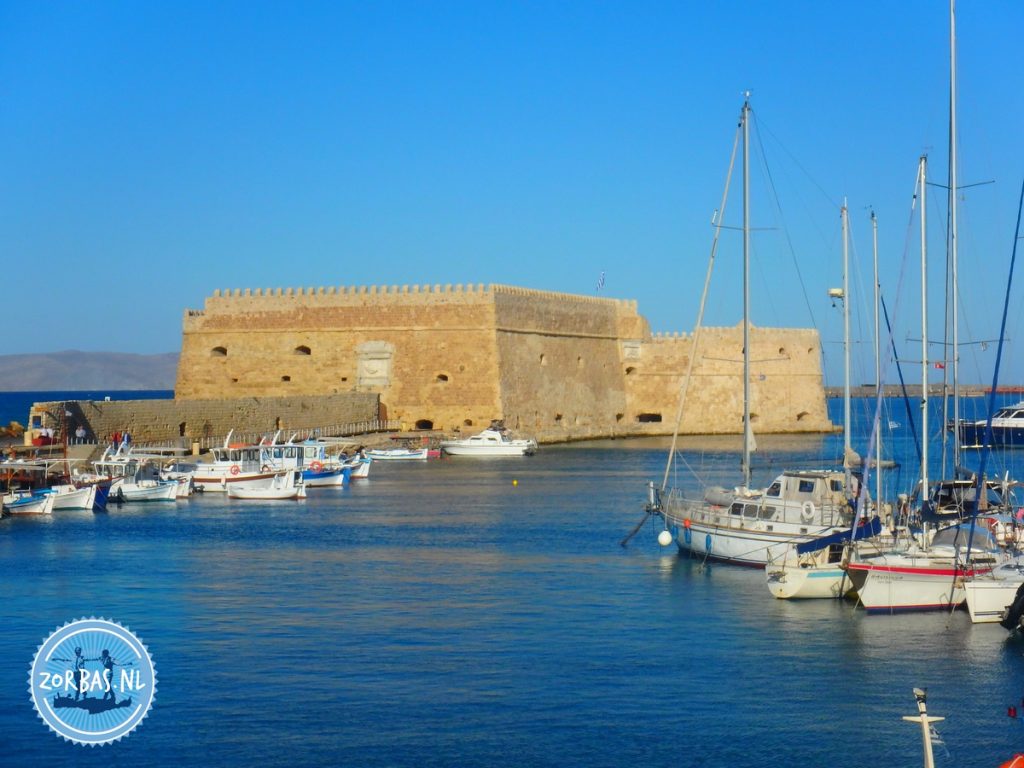
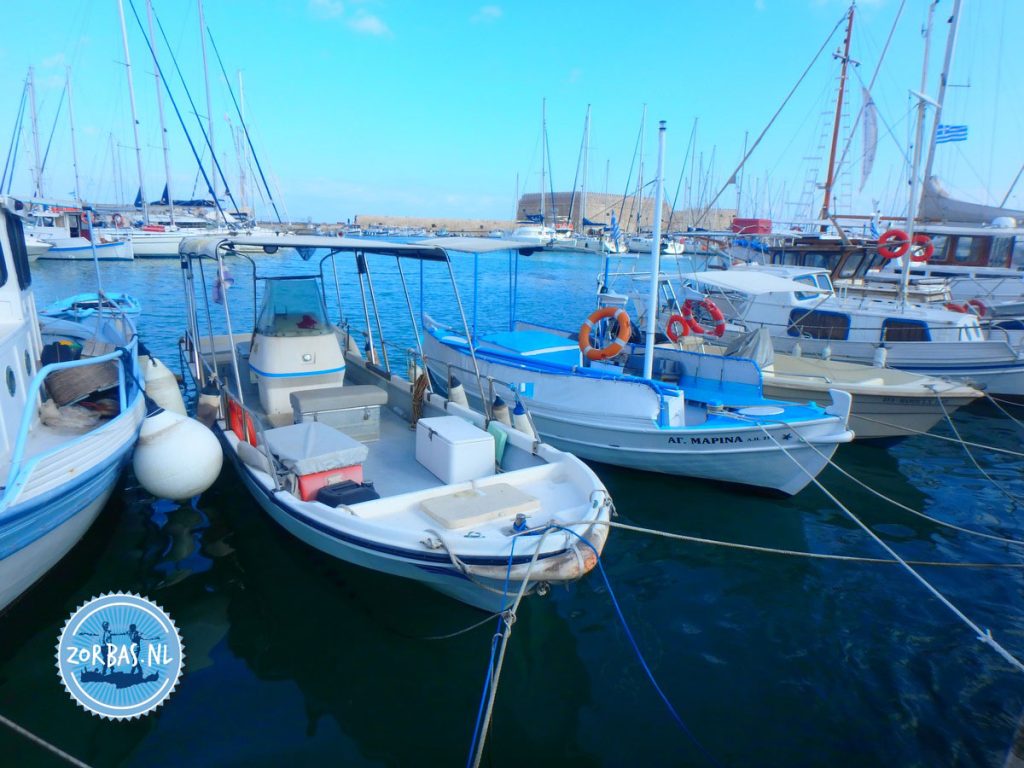
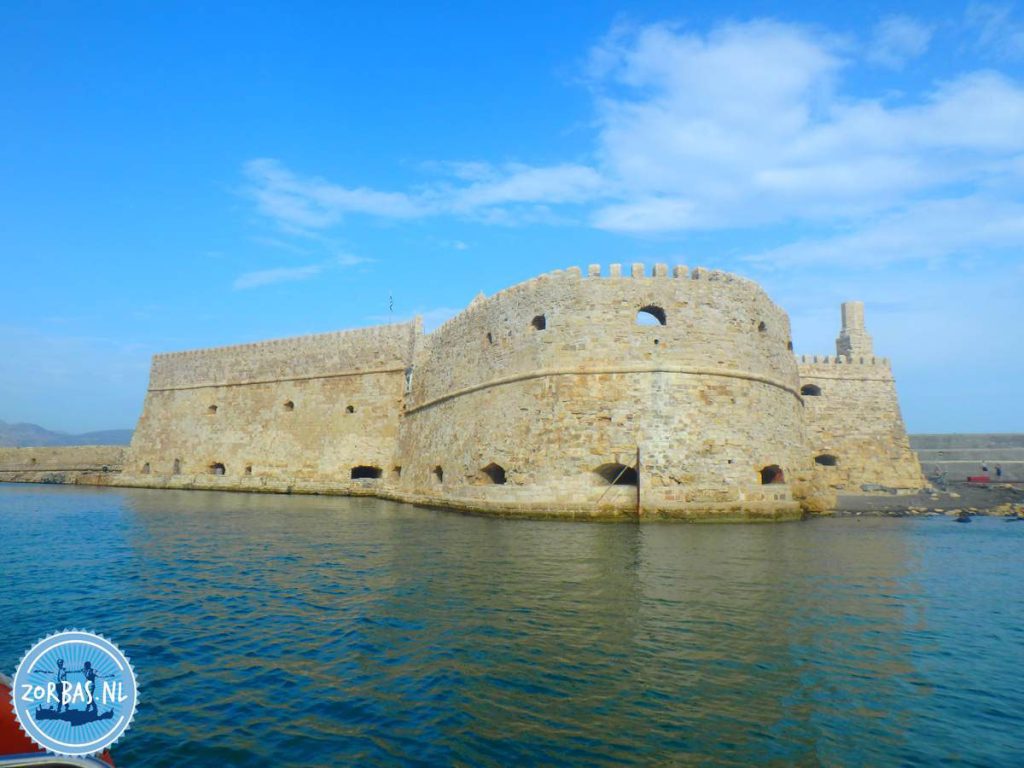
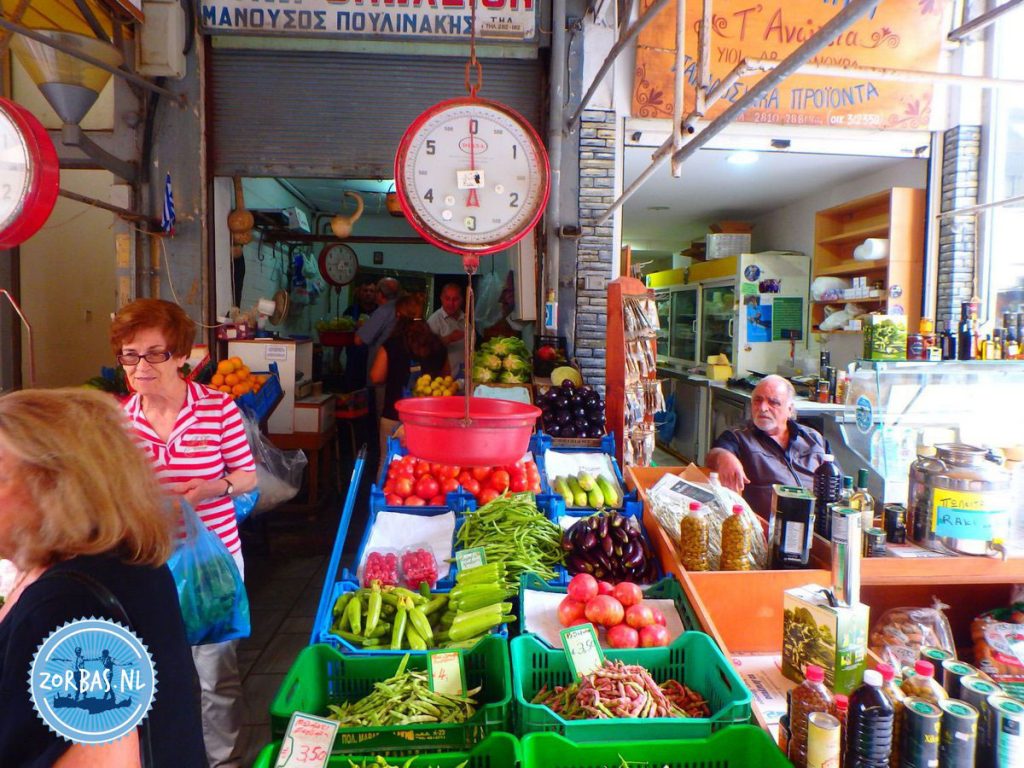
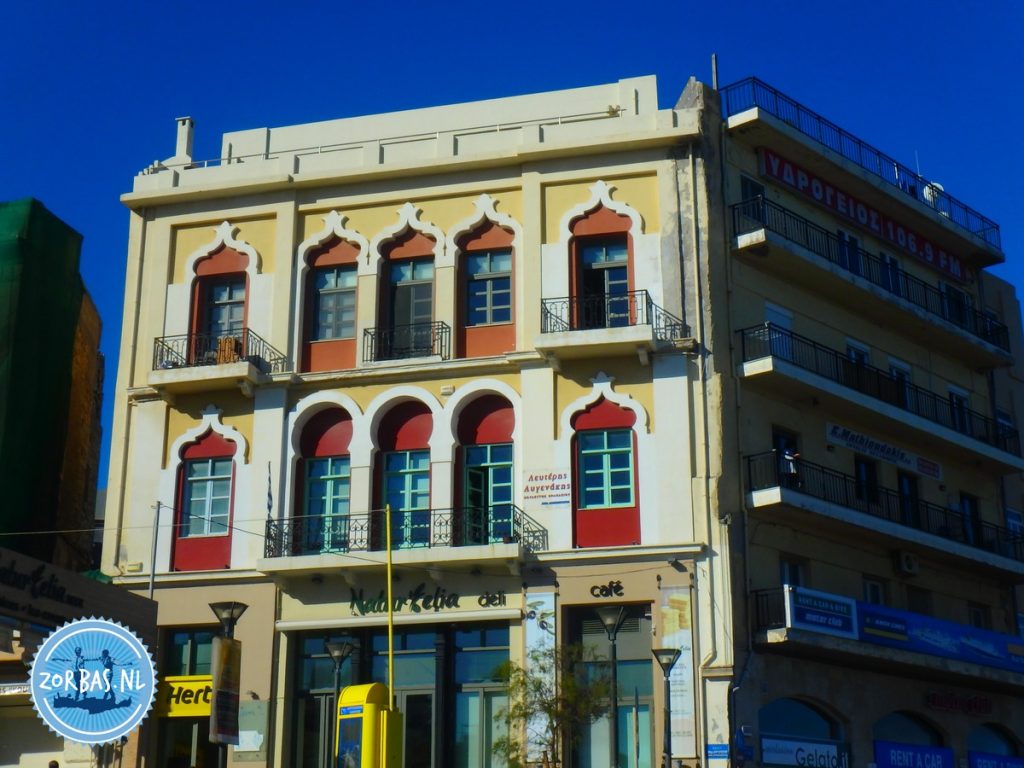
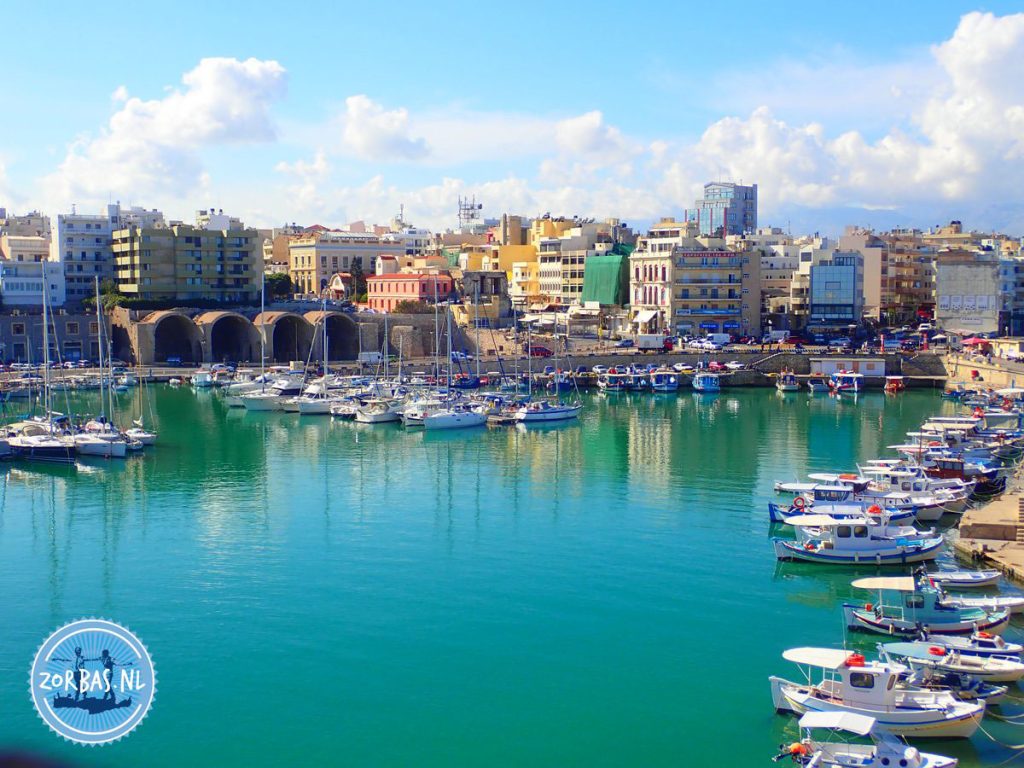
HERAKLION Crete: Heraklion is the capital of Crete. Heraklion has more than 175.000 inhabitants and the city is still growing. From the port there are daily ferries to various destinations in Greece, but also beyond like Italy. The Venetian fortress, the ancient city walls, the arsenal and the city walls and Chanioporta with the Pantokratoras gate are worth a visit! There are also nice shops and restaurant, bars, etc in the centre of Heraklion.
Every Saturday morning there is a gypsy market close to the centre of town. Here you can find vegetables and fruits, but the gypsies also sell for example clothing and fabrics. In the archaeological museum in Heraklion you can admire many finding from Knossos, Malia, Zakros and Festos. If you consider visiting the archaeological museum, you better first visit the palace of Knossos. This way you get a much better picture of all the findings from Knossos.
Things to see in Heraklion
Also the grave of Nikos Kazantzakis is a nice place to visit. On his gravestone is: “I fear nothing, I hope nothing, I am free”. The view you have from the grave is amazing. You can see the city and the mountainous landscape around Heraklion. Nikos Kazantzakis was born on the 18th of February 1883 in Heraklion. A philosopher who studied in Athens and Paris. He was briefly minister after the repatriation of Greece. After that he worked for UNESCO. Nikos Kazantzakis wrote several books; the most famous one is Zorbas the Greek, of which a movie is recorded. In 1952 he was nominated for the Nobel price. In 1957 he was buried with great public interest in Heraklion.
From Heraklion busses depart in all directions of the island. Opposite to the port and next to the centre of town is the largest bus station of Crete. The airport of Heraklion is one of the busiest in Greece, especially during high season.
Other high lights to see
HERSONISSOS Crete: Hersonissos is most busy tourist resort on the island. If you like a quiet, peaceful holiday, this would not be the place to be for you! It is a nice little town to visit at night. The main street exists mainly from shops, discos, bars and restaurants. The old villages Koutouloufari, Piskopiano and Old Hersonissos are worth a visit. These villages are just up from Hersonissos and they still have the traditional Greek atmosphere. You can enjoy here a lovely meal in one of the many taverns in the old villages.
IDA MOUNTAIN Kreta (PSILORITIS): The Ida is the highest mountain on Crete with highest top reaching 2456 metres. This highest top is sometimes also called Psiloritis, which is actually the name of the mountain range.
IERAPETRA Crete: Ierapetra is reasonable big town in South East Crete. It is a popular holiday resort. In the harbour of the city is a Venetian fortress. Just outside the boulevard are some beautiful beaches. There are daily boats going from Ierapetra to the beautiful island Chrissi (Donkey Island), where almost nobody lives. There are just some taverns that are open in the day. It is worth it to go there if you like to snorkel in the crystal clear water and love sunbathing.
Tourist information Crete – Crete is known for caves and Minoan excavations
KAMARES CAVE Crete: The Kamares Cave is a cave at an altitude of 1500 metres. The Cave dates from the Minoan century and is just above the village of Kamares in the southern part of Central Crete. You can visit this cave mostly in the summer, but sometimes the cave is also open in the winter.
KERA Crete: On the way to Lassithi Plateau is the little village Kera, named after the famous Kera Kardiotissa monastery. They built this monastery at the beginning of the 14th century. In winter it is nice and quiet here, but during summer it can get busy with tourists.
KNOSSOS Crete: Knossos is the largest Minoan palace. The palace is from around 2000 BC. People suspect that the palace was destroyed by the outburst of the volcano of Santorini (around 1450 BC). The palace was excavated and partially restored under the direction of Arthur Evans in the earliest years of the 20th century. Unfortunately he used a lot of imagination while rebuilding Knossos. The labyrinth en de King’s Hall stayed intact. Knossos is open all year round.
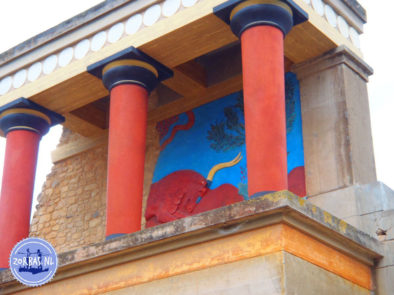
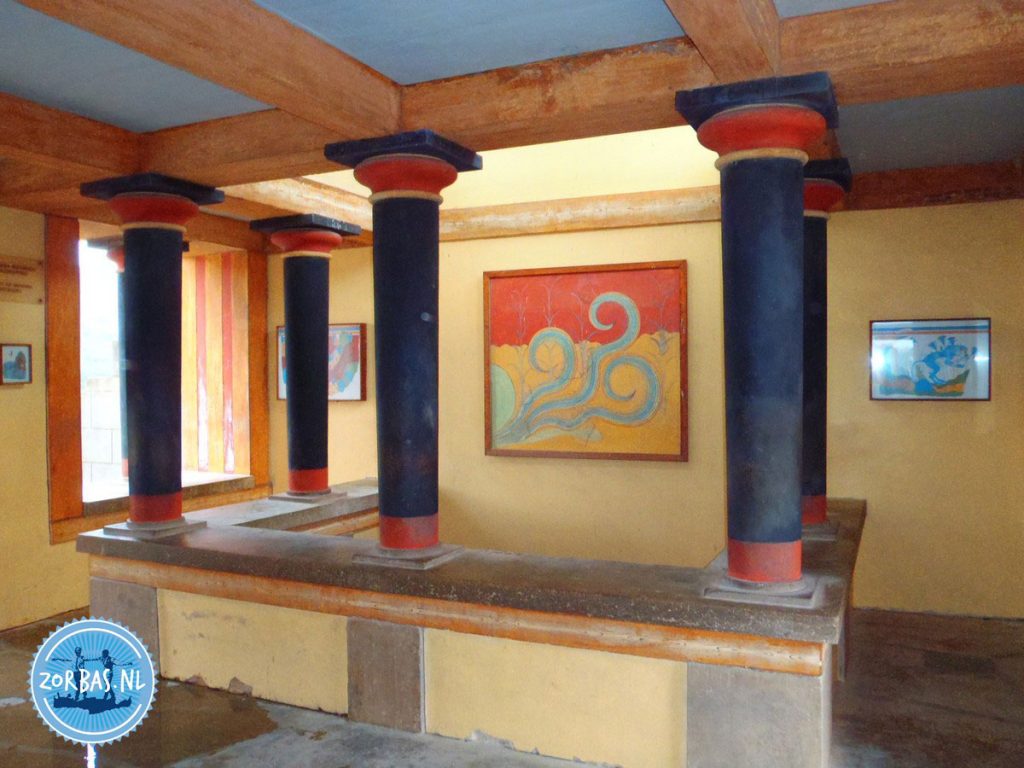
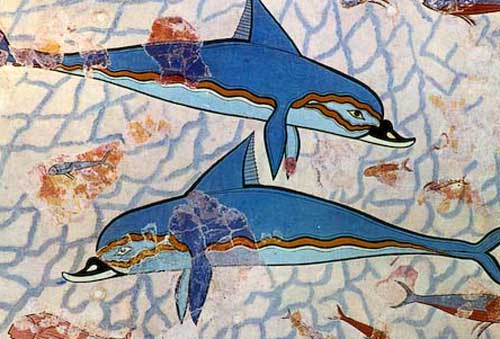
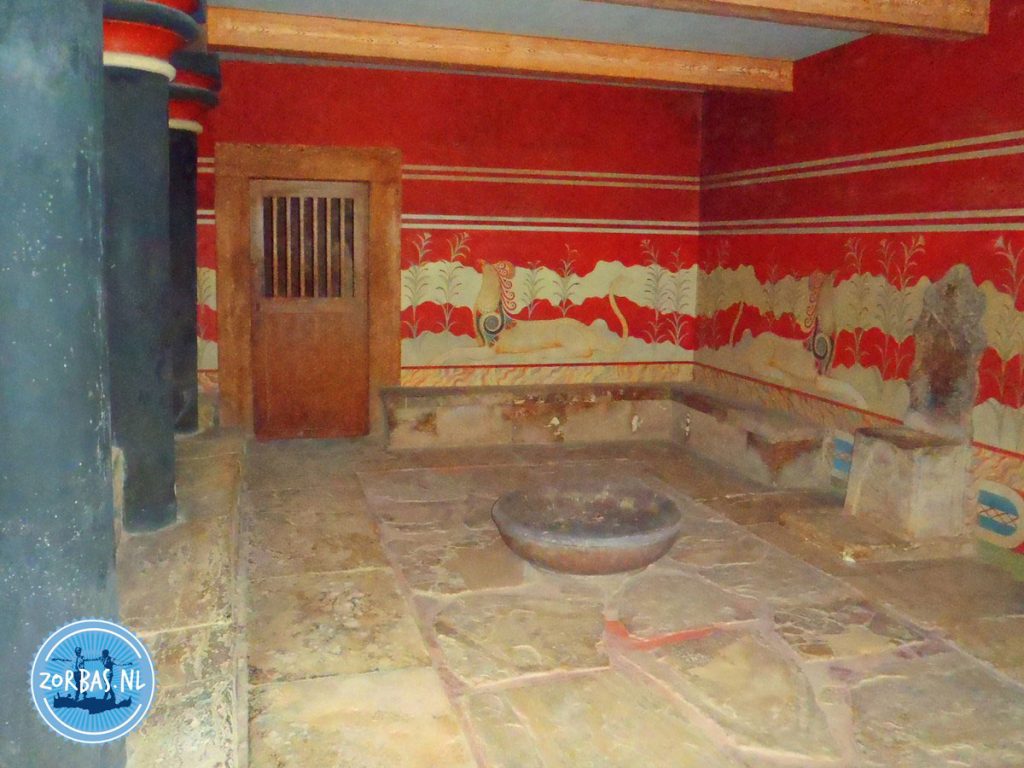
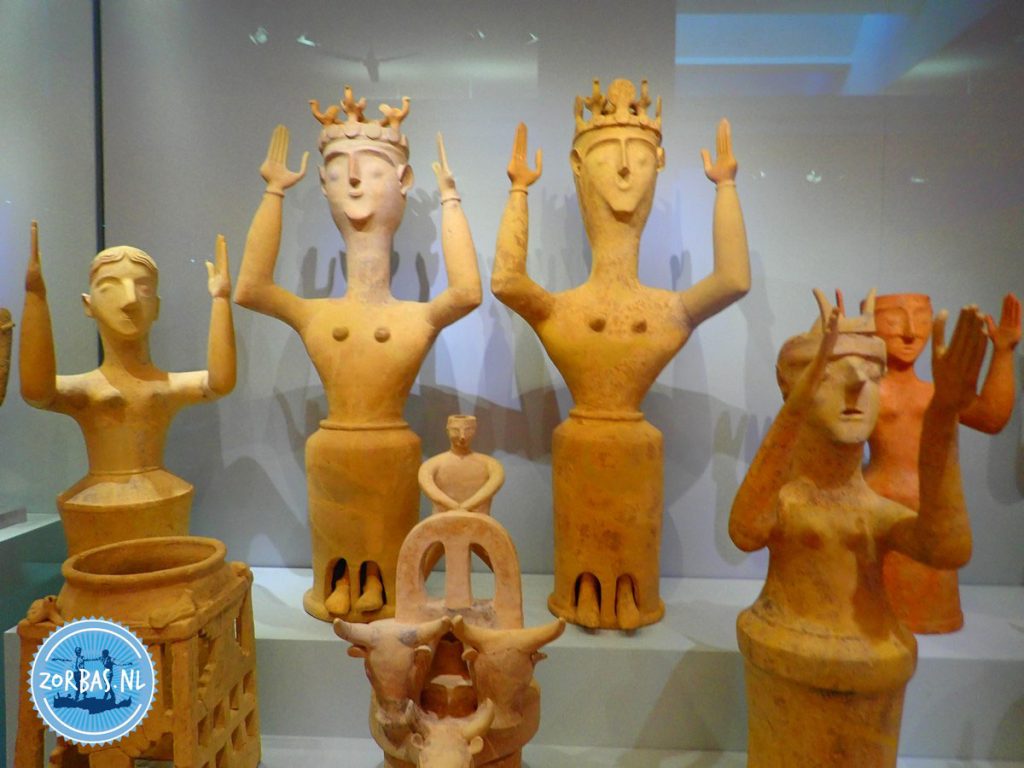
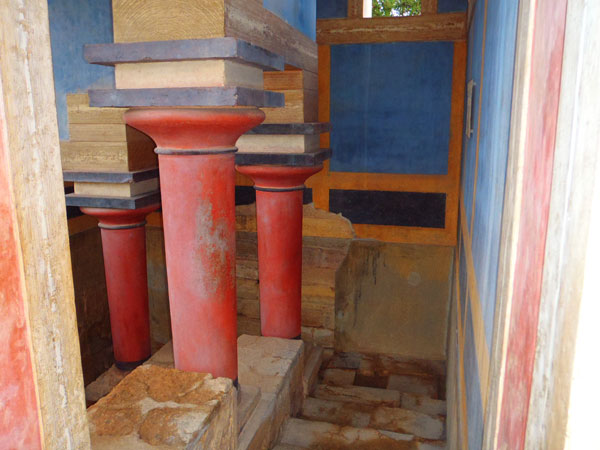
KOKKINI HANI Crete: NIROU HANI: Just outside Kokkini Hani is the Minoan villa Nirou. This villa dates from 1500 before Christ. It must have been the villa of an important leader from the Minoan period, probably a priest.
Visit the regional unit of Lassithi
KRITSA Crete: The village of Kritsa has an impressively beautiful Panagia Church (Holy Virgin Mary). The church was rebuilt around the 14th and 15th century. The traditional village of Kritsa is built on a hill, with a lot of narrow streets. You can buy here a variety of hand made craftwork. If you walk away from the narrow tourist streets, you can explore some of the old parts of Kritsa.
LASSITHI Crete: Lassithi is situated 50 kilometres East from Heraklion in the Dikti mountains. It is a mountain plateau at an altitude of almost 1000 meters. Lassithi is also called the granary of Crete. Once upon a time thousands of white windmills on the plateau pumped water from the ground. These were replaced in the fifties by diesel engines. Lassithi is still worth a visit. Thanks to the fertile soil, the agriculture is still developing here. They are also rebuilding some old white windmills to let the character of the old Lassithi “relive”.
LATO Crete: Lato is a Dorian settlement, which was founded around 800 BC. There are shops here that date back to the 4th century BC. Lato is open all year round and is located a few kilometers from Kritsa. It overlooks the Bay of Mirabello.
Nice coastal villages
LOUTRO Crete: Loutro is one of the few places on the south coast of Crete, which is only reachable by sea. You pass Loutro after walking the Samaria gorge. But it is also really nice to visit Loutro on your own, which means you either take a boat or go there on foot. Beautiful clear blue sea water, lovely taverns and there is even place to stay overnight!
MALIA Crete: Malia is a busy tourist resort. Malia was one of the first major tourist resorts on Crete. You can buy here delicious bananas that grow around the village. Just outside of Malia is the Minoan palace that dates back to 1900 BC. Probably this used to be the country house of King Minos.
MATALA Crete: Matala was in ancient time the harbour of Festos. Today, Matala is a pleasant seaside resort to visit. Matala is famous for the chalk cliffs in which many caves were built in the Neolithic era. These caves, which you can visit, were inhabited by hippies in the 60s – 70s. The hippies don’t live here anymore, but the village still has the Flower Power atmosphere.
Plateaus and fishermen’s villages
MESSARA Crete: Messara is the largest plateau of Crete and is located in the south of Crete. There are a lot of plastic greenhouses where flowers, cucumbers, tomatoes, melons and beans grow. The olive oil from this area is often called the best in the world. In ancient times Messara was the granary of Crete. You can visit Messara the whole year, especially in winter it is very beautiful because of everything that grows and thrives here.
MILATOS Crete: Milatos is originally a fishermen’s village. However, a lot has changed now. Just like almost everywhere in Crete, there are now also many hotels and apartments in Milatos now. But it is nice to go to Milathos, especially if you like to eat fresh fish! Just outside the village is a cave, which is located somewhat higher. It is a nice walk to the cave, where you can always go in to. It comes in handy to carry a small flashlight.
Tourist information Crete – Caves, gorges, little villages…. too much to mention it all
MIRES Crete: This reasonable big village is the agricultural centre of the district of Messara.
MOHOS Crete: Mohos is a mountain village just before Lassithi. The drive to this village from Stalida is really amazing. You have a panoramic view over the entire bay of Chersonissos, Stalida en Malia. At the central square of the village there is a beautiful church with several taverns around it. The village has a delicious local wine.
NEAPOLI Crete: This is the political capital of Lassithi. A town without noticeable attractions to see, but it is nice just to drive trough Neapoli.
OMALOS Crete: Omalos is a small village in the White Mountains (Lefka Ori), but the name actually refers to the plateau of Omalos; the Greek word omalo means even, plain, regular or smooth. Omalos is located 38 km south from Chania and with an altitude from about 1000 to 1200 meters. The plateau covers an area of 15 km2. The cooler climate and fertile soil lends itself for growing vegetables and fruit such as potatoes and apples, together with cereals.
And more beautiful areas to visit
PALEOCHORA Crete: The village Paleochora is built on a peninsula with at both sides of the village the sea. On the Westside of the village is a very wide sandy beach and the Eastside has a pebbled beach. At the boulevard are many nice taverns and little bars. In the evening the central road is closed for cars, so you can enjoy your food and drinks here in peace. Up the hill in the village is a beautiful Venetian fortress. Paleochora has a port with a long jetty from where the ferry boats depart to the Samaria gorge, Sougia, Agia Roumeli, Sfakia, Loutro, Elafonisi and the island Gavdos.
PREVELI Crete: Preveli is a impressive old monastery, built above the sea. The old monastery is also build on the shore of the river Megalopotamos. It is a deserted monastery (Kato Preveli). After you visit the monastery, you walk right trough the water to the beach of Preveli. Along the riverbed there grow many palm trees and oleander bushes with beautiful pink flowers. It is the most amazing and special piece of nature.
Ancient history of Crete
PSYHRO Crete: At the Lassithi Plateau and the village Psychro is the beautiful Dikti cave, which is said to be the birthplace of Zeus. According to the myth Zeus was born in this beautiful cave and raised by nymphs. The trip to the cave takes about 25 minutes if you go by foot, but you can also take a donkey. In the cave you descend 70 meters down (bring a flashlight!).
RETHYMNON Crete: Rethymnon is a big city in western Crete. It is also the capital of the regional unit Rethymnon. Rethymnon is located between Heraklion and Chania. It has a beautiful Venetian harbour, narrow streets, ancient minarets and ancient city walls. Rethymnon has many Neoclassical, Venetian and Turkish influences. Rethymnon also has an archaeological museum. Visit the church and the square of the four martyrs. From the port depart boats to various Greek islands. There is also regularly a ferry to Santorini.
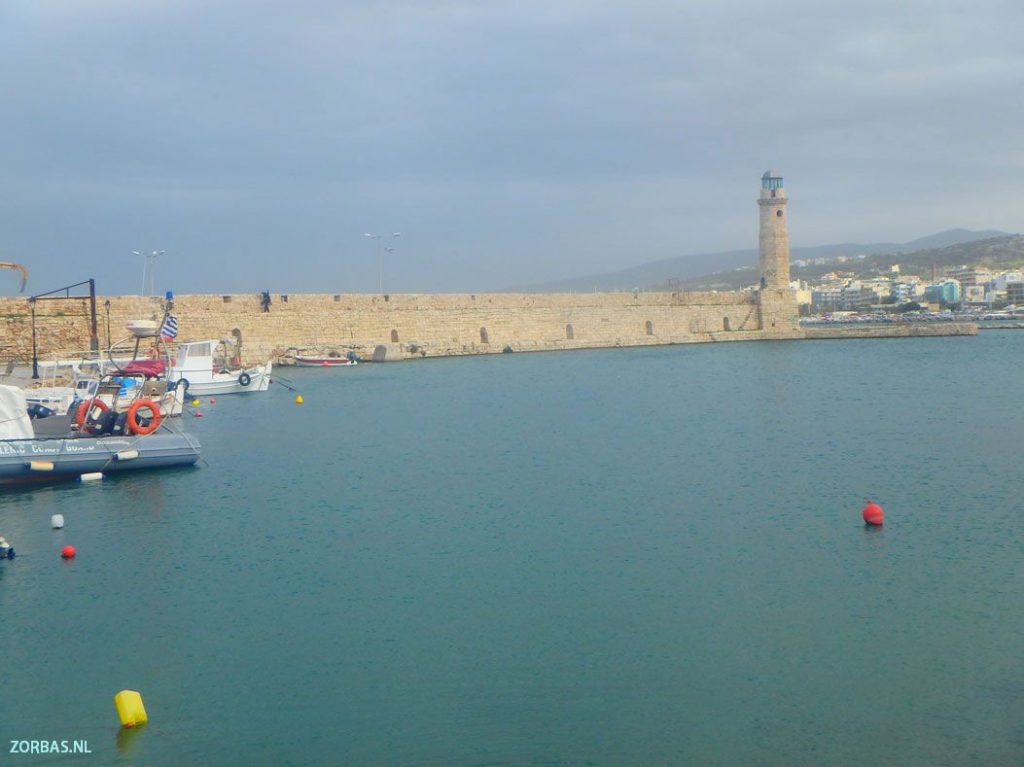
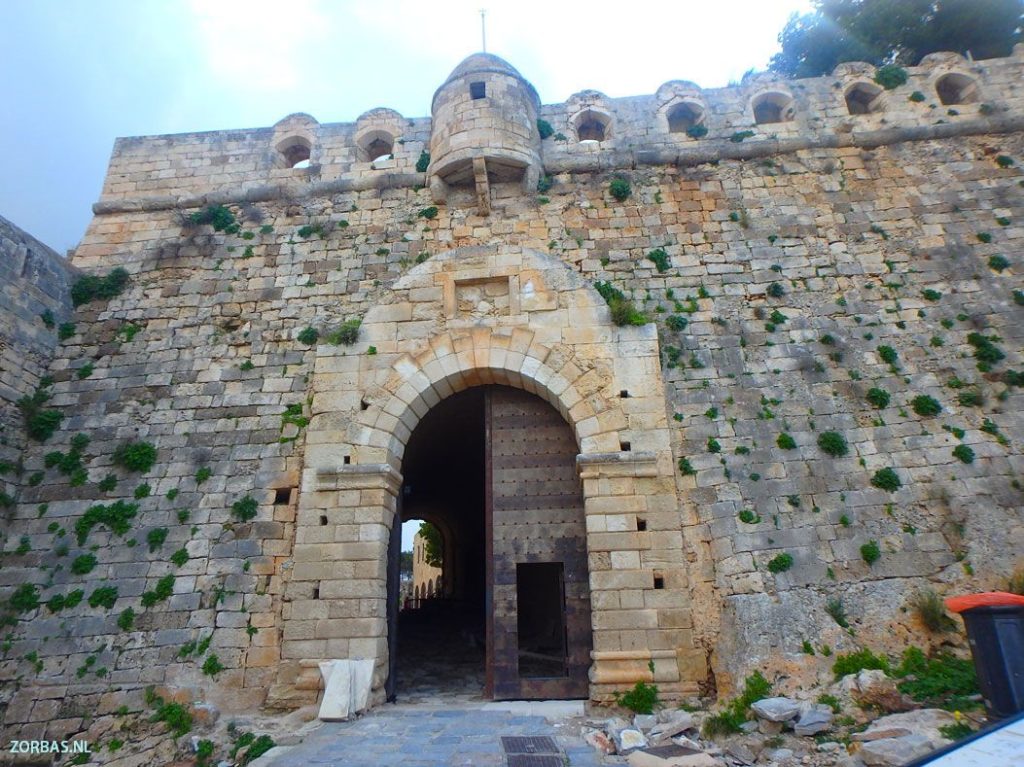
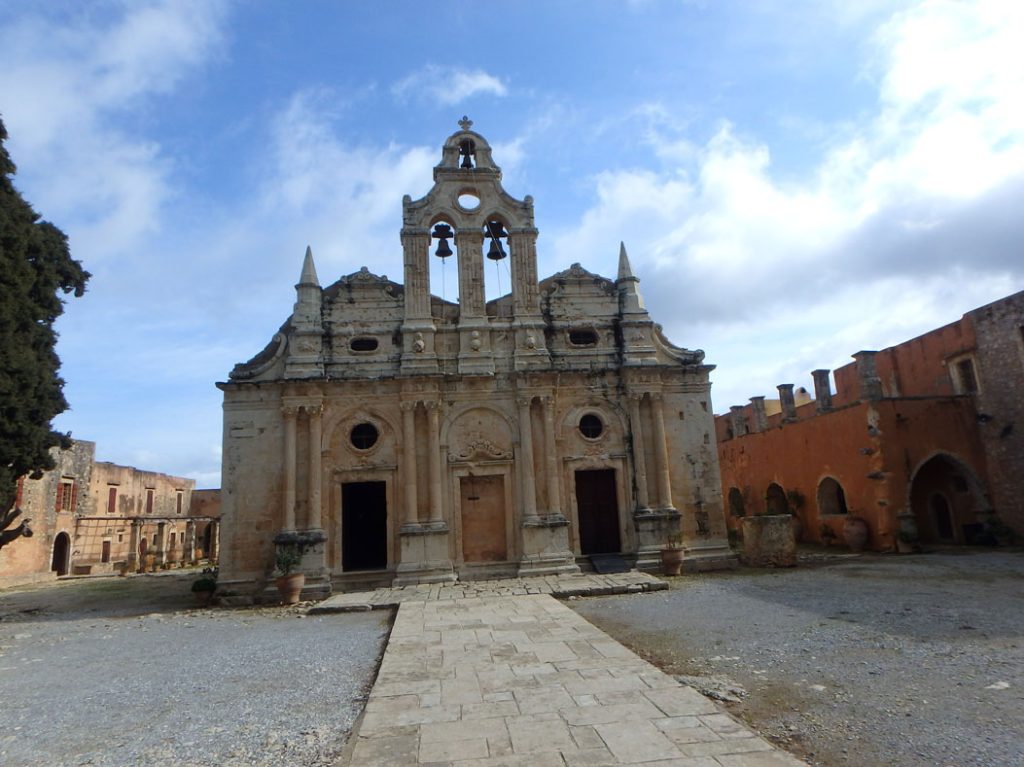
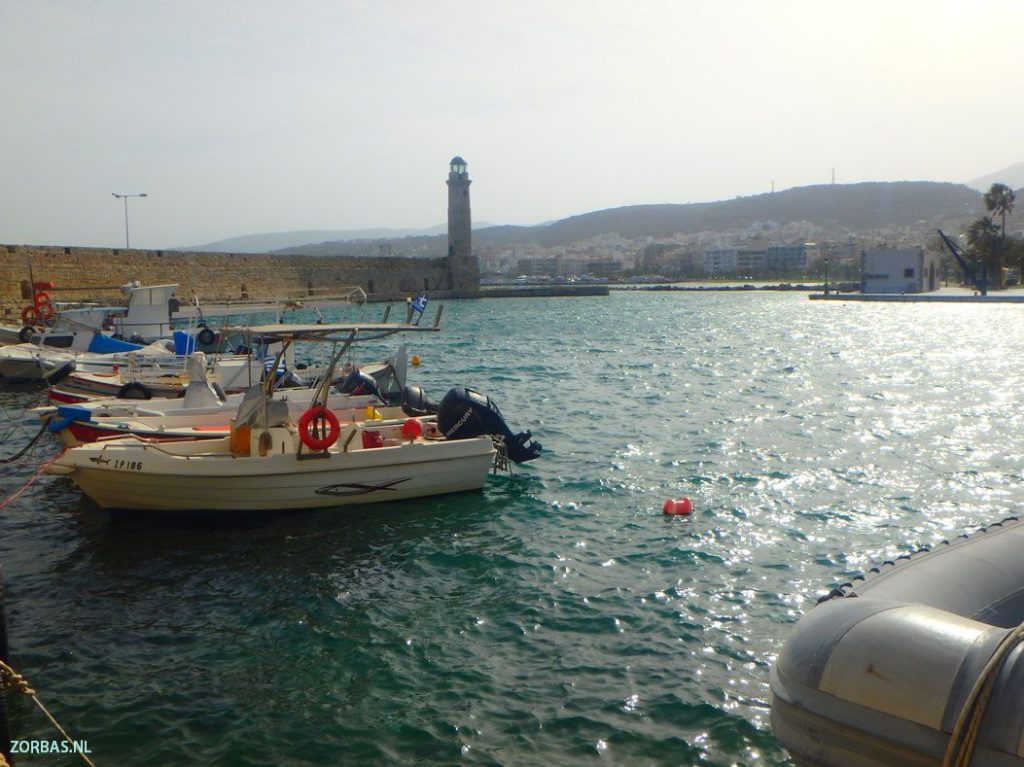
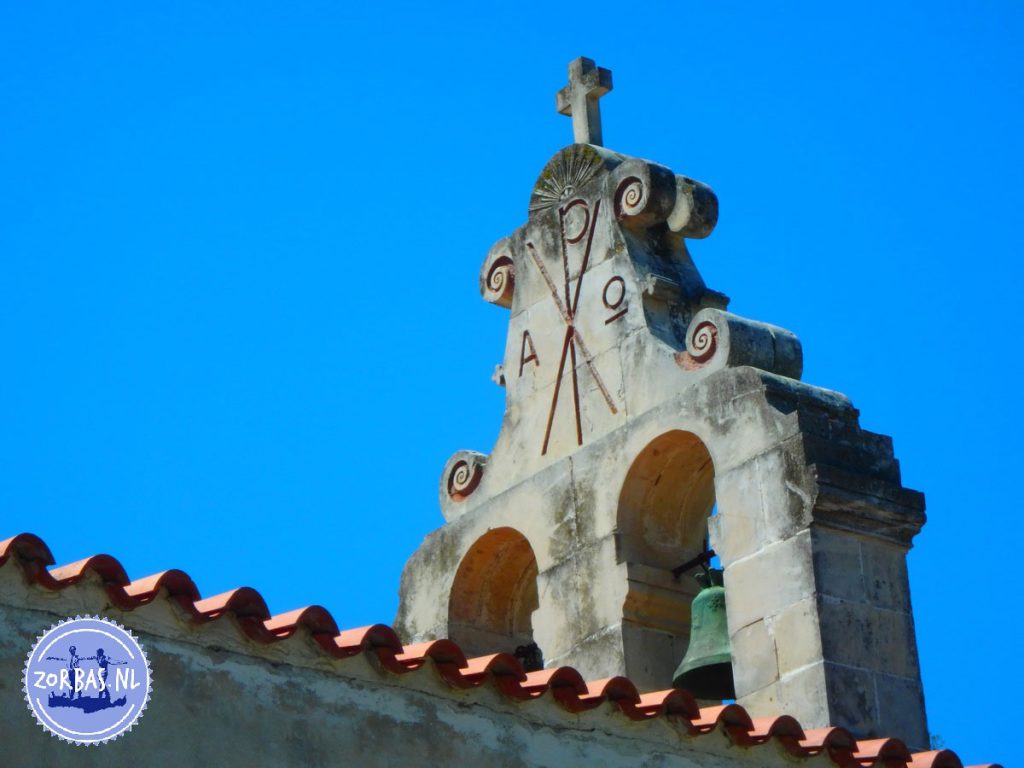
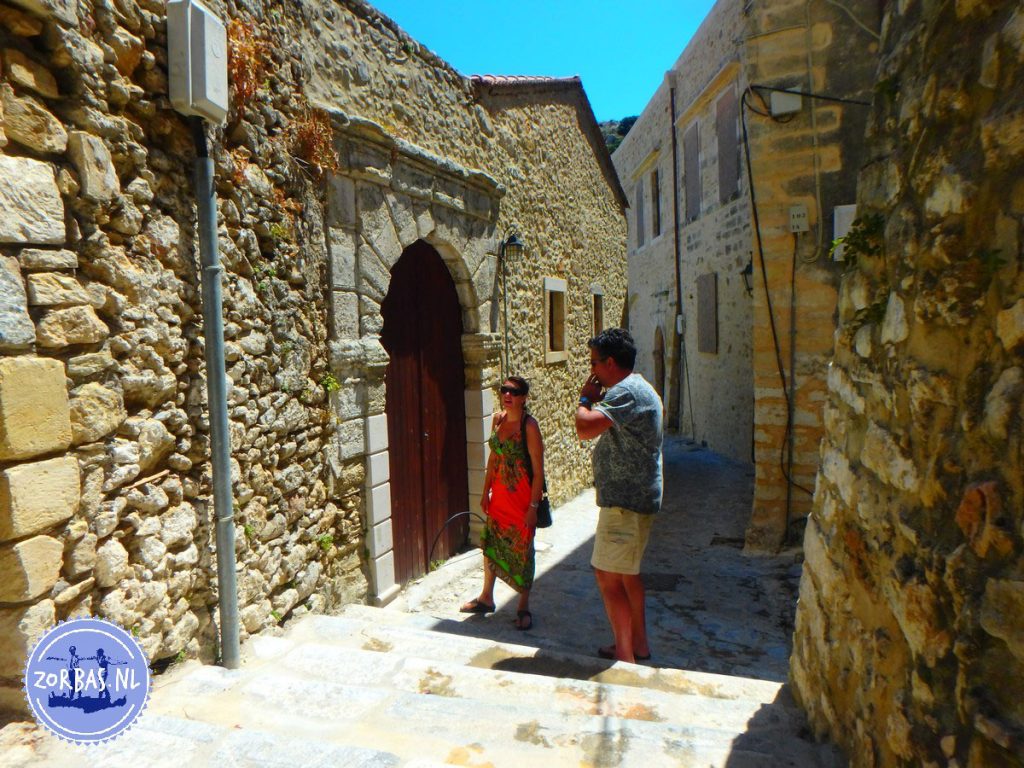
Great areas for walking – The famous Samaria Gorge
SAMARIA Crete: In the White Mountains (Lefka Ori) is the most famous gorge of Crete, the Samaria gorge. Until Agia Roumeli the entire hike is 18 kilometres and can be strenuous, especially at the peak of summer! The most famous part of the gorge is the stretch known as the Iron Gates, where the sides of the gorge close in to a width of only four meters and soar up to a height of almost 300 meters. The gorge became in 1962 a National Park and is protected by UNESCO. Before you decide to walk through the gorge, make sure you are well informed and know what to expect.
SFAKIA (HORA SFAKION) Crete: This is a typical traditional Cretan village on the soutwest coast with lots of history. Sfakia is the only place in Greece that has never been occupied during war by enemy forces. The village and the region have committed a lot of resistance in the past against potential invaders. Sfakia is known as the port to which visitors of the famous Samaria Gorge from the terminus of Agia Roumeli, are transported by boat.
More cities and caves to visit
SITIA Crete: Sitia is the easternmost town on the north coast. The city has a port with boat services to Piraeus, Santorini, Rhodes and summer multiple services to several other islands. There is a Venetian castle. The main source of income for the locals, is the high quality olive oil. In addition, there are many cultivated grapes in the area of Sitia. Sitia is also a small archaeological museum. Along the waterfront is a pleasant boulevard with several restaurants and coffee shops. If you are on your way to Vai, it is definitely a nice place to take a short break.
SKOTINO CAVE Crete: The Skotino cave is about 7 kilometres away from Kokkini Hani and is a beautiful place to visit. You can go there on foot. The cave was an important sanctuary from the Minoan period. The cave was studied by the archaeologist Sir Arthur Evans, who excavated the palace of Knossos. He claimed that the cave must be a part of the labyrinth associated with Knossos. On July 26, there is a celebration in honour of the church Agia Paraskevi, which is at the entrance of the cave.
Tourist information Crete – From tourist attractions to unknown places
SOUDA Crete: Souda is a large natural bay. There is a NATO naval base located in Souda and across the bay. The place Souda is located at the bay of the Akrotiri peninsula on the northwest coast of Crete. Souda has a large port and is actually the commercial port of Chania. The ferry line Piraeus – Chania is also arriving here, which is the daily connection with the mainland of Greece.
SPINALONGA Crete: A beautiful island in the Gulf of Mirabello. Especially the rich history of the island makes it more than worth a visit. On Spinalonga you can find Venetian, Turkish and Greek building styles. In the most recent history, the island served as a leper colony. In 1957, the last inhabitant left the island. From Agios Nikolaos, Elounda and Plaka there are several times a day boat services to the island.
THRAPSANO Crete: This village is known for its beautiful pottery. Here the pots are still produced according to the tradition; all hand-made and produced in the same way like they did in the Minoan period. Even the ovens to bake the pots, are brought to temperature in a traditional way.
TIMBAKI Crete: Timbaki is a small town about 65 kilometres south of Heraklion. It is located on the relatively flat and green Messara plateau and it is a center for agriculture. In the area are many greenhouses where they grow among others tomatoes, melons and artichokes.
Tourist information Crete – The eastern part
TOPLOU Crete: On the route from Sitia to Vai in the easternmost part of Crete you can find Moni Toplou. In the village of Toplou is a beautiful monastery (Moni), which looks more like a fortress. The monastery dates from the 15th century. Inside the walls you can see the beautiful church “Panagia Akrotiriani” with an icon from 1700. The village Toplou is between Sitia and Vai.
VALLEY OF THE DEATH Crete: Through this valley, you can take a walk, which starts from the center of the village of Zakros in eastern Crete (ask us for more information). The gorge name comes from all niches and crevices in the gorge. The dead were buried here in pre-Christian times.
VAI Crete: The palm forest, partly along the beach and for the most part inland, is a protected nature reserve since 1973. The trees are date palms and the history of the forest goes back to the time when Egyptian soldiers ate here dates. In the 70s Vai became famous thanks to the recording of the Bounty commercial. In summer it is very busy here, but in winter you can enjoy the natural beauty.
Mountains and Minoan palaces on Crete
WHITE MOUNTAINS Crete: The Greek name for these white mountains is “Lefka Ori”. These mountains are always white during the winter, because of snow. Even until the beginning of June you will see from a far distance the white parts of snow on the mountains. These mountains are very rough. The Samaria gorge runs trough these mountains.
ZAKROS Crete: Zakros is one of the four Minoan palaces of Crete and is located on the east coast. Around 1600 BC Zakros had the largest fleet of the time. The protected harbour was strategically important for trade to the East. Nowadays they still make archaeological findings. Archaeologists still excavate here and a lot of antiques from the Minoan times are still being found.
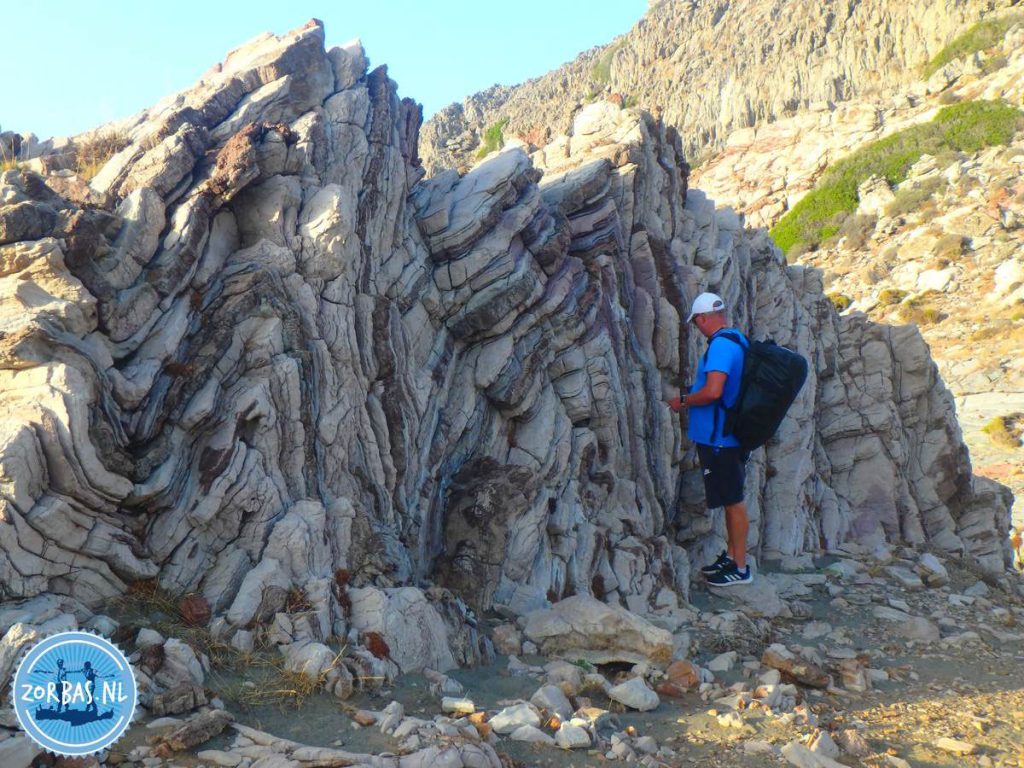
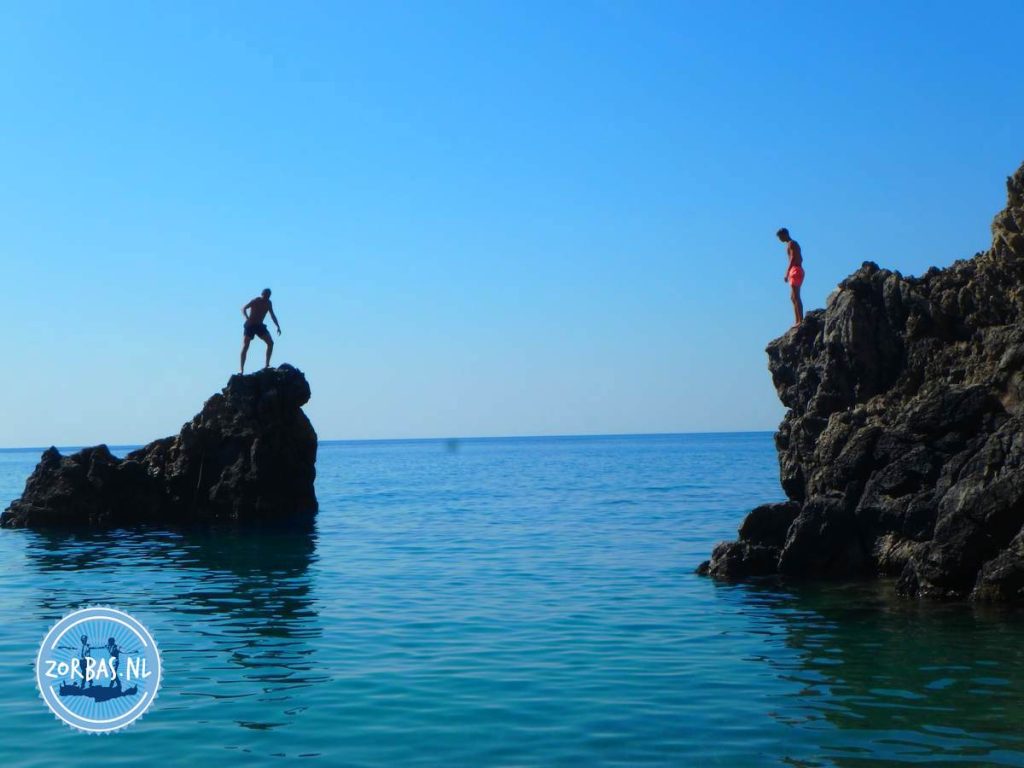
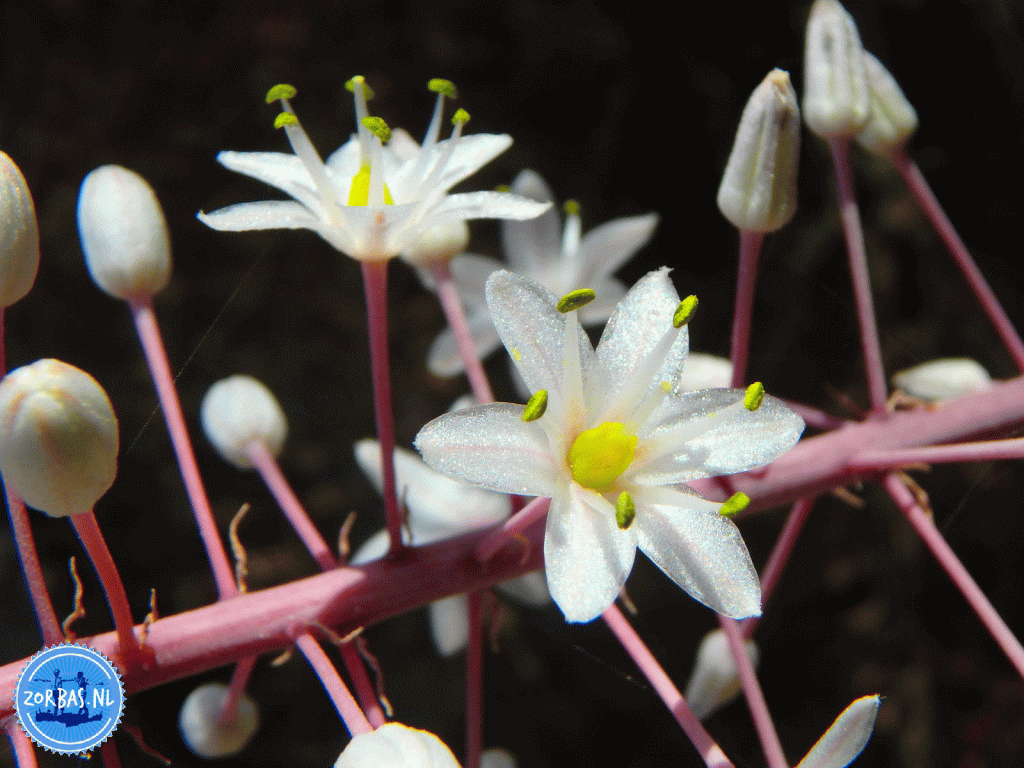
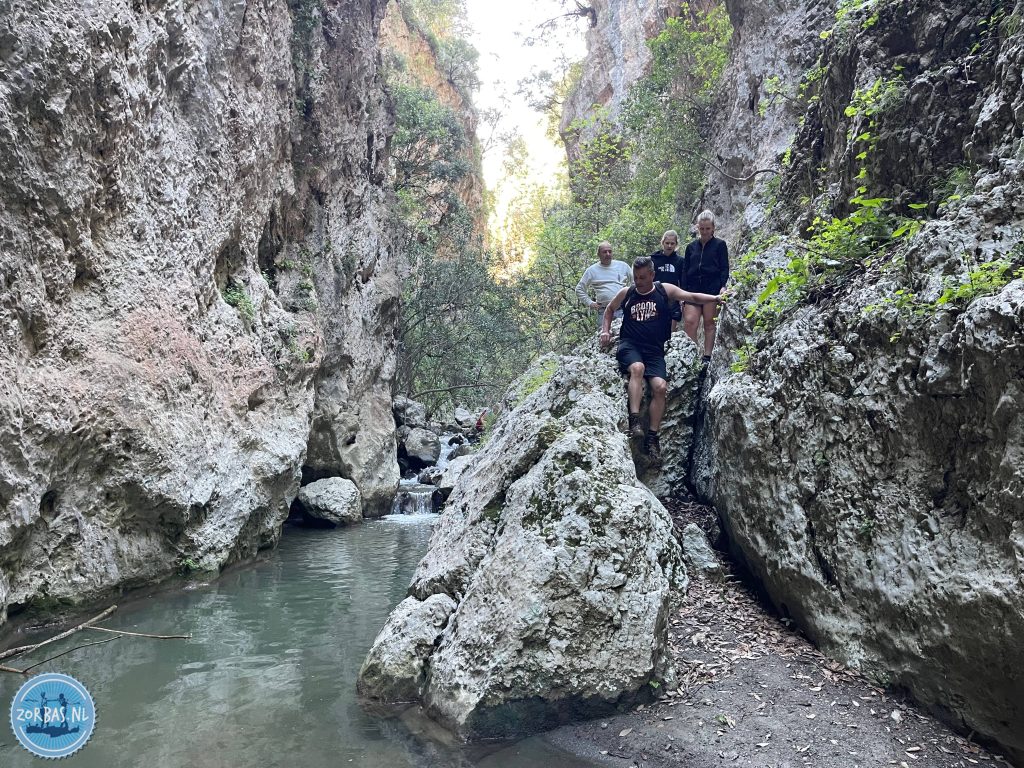
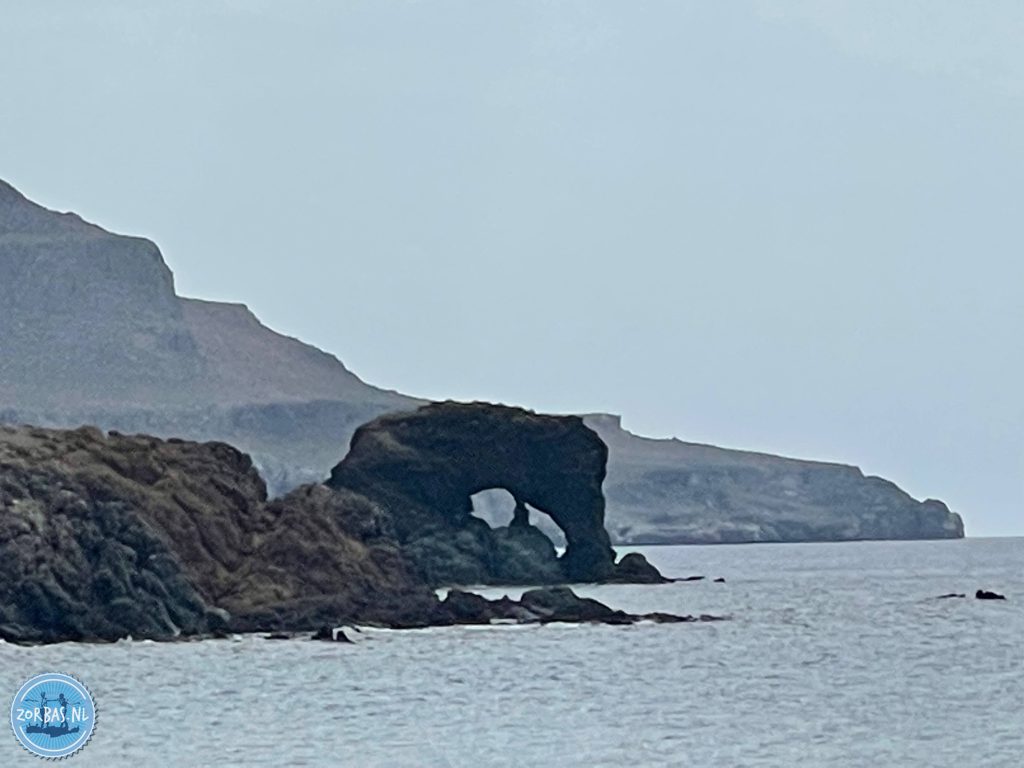
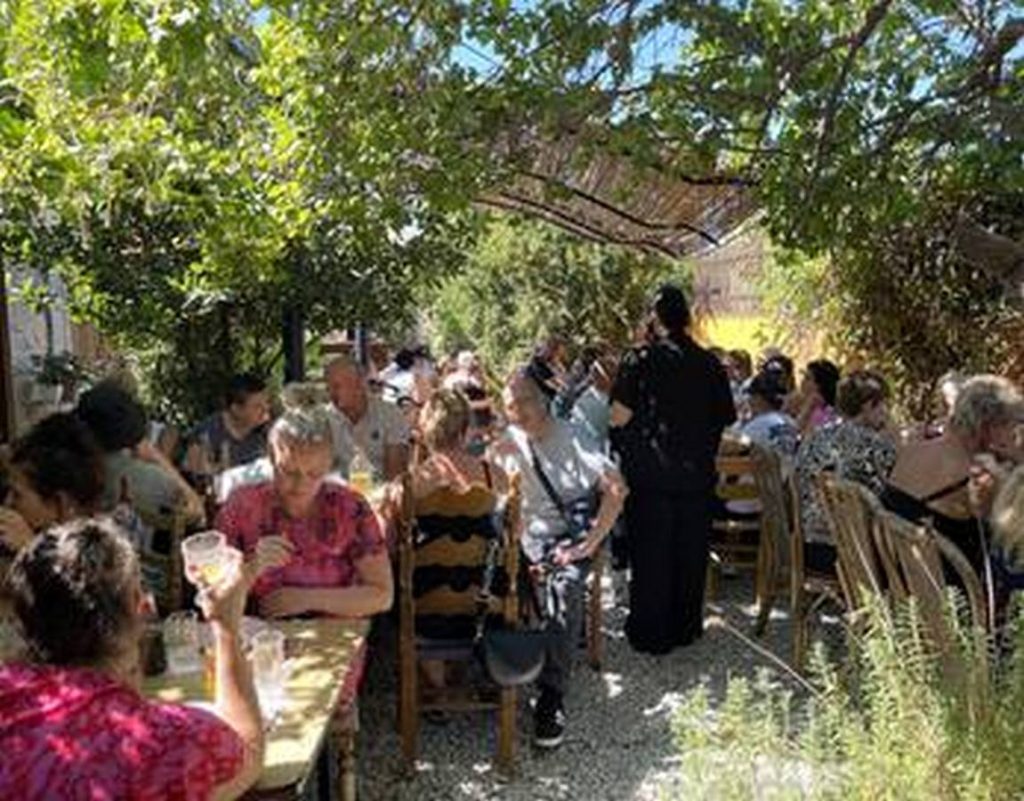
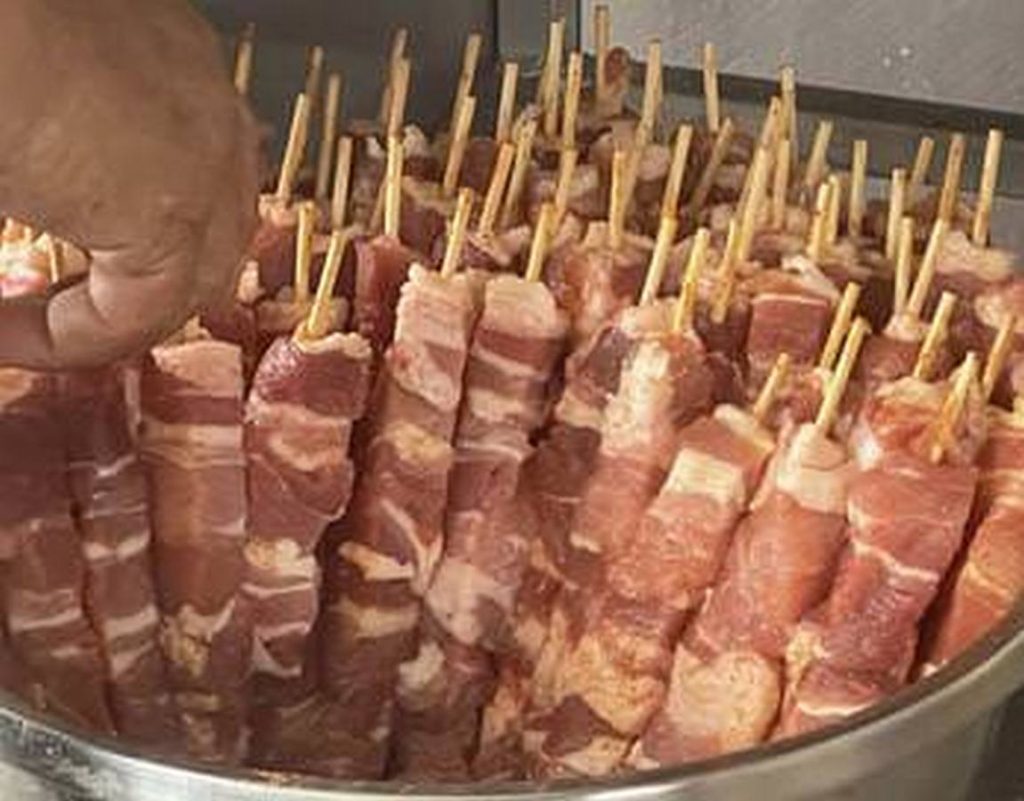
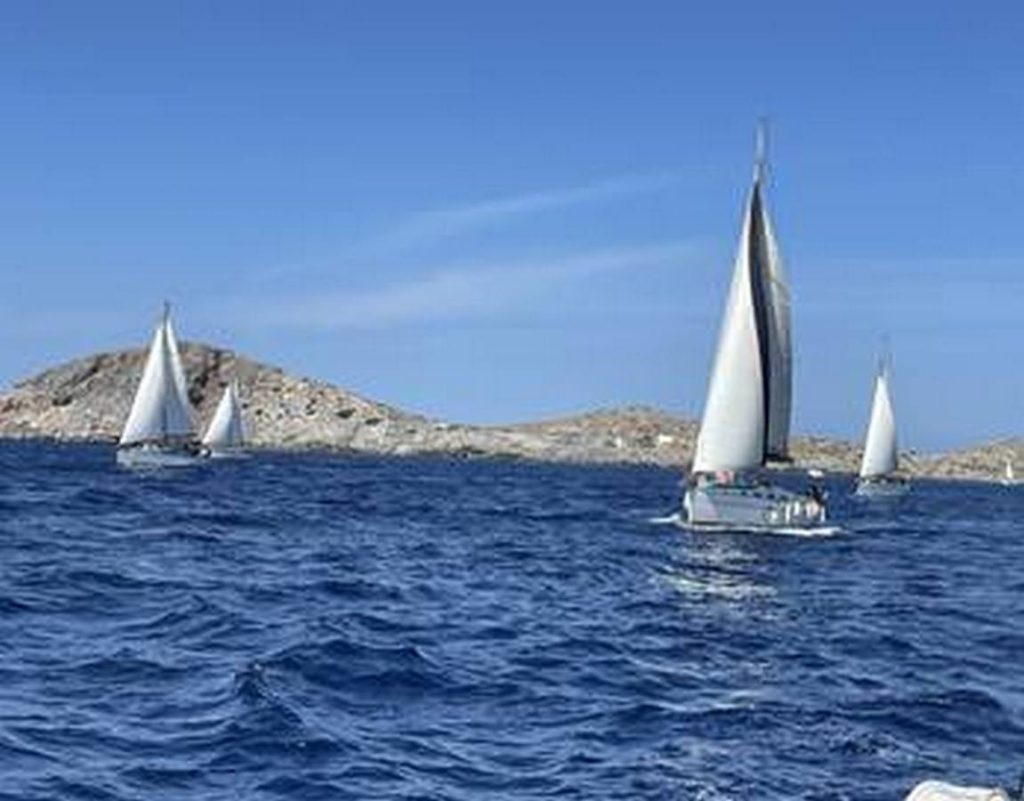
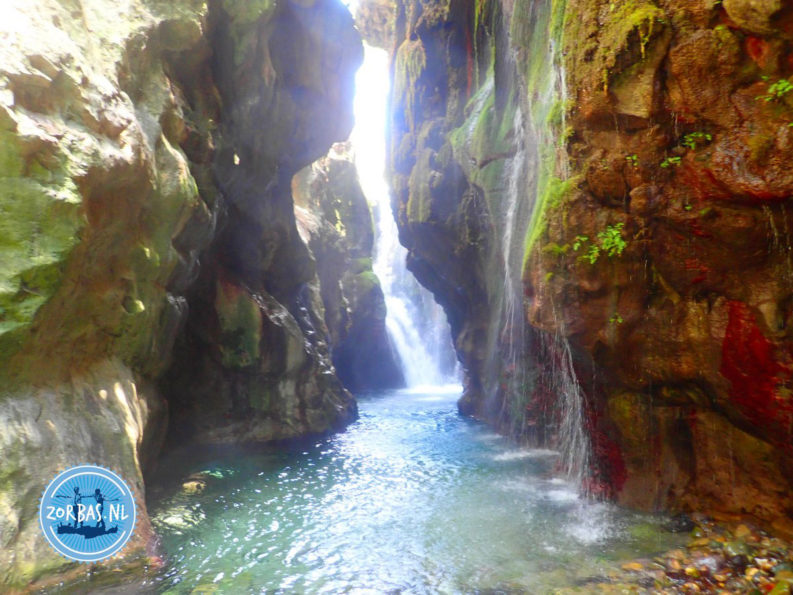
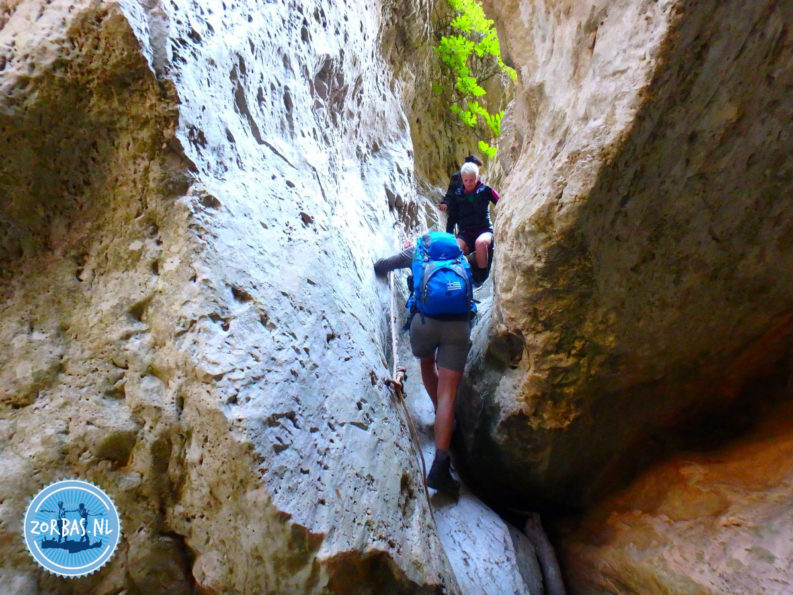
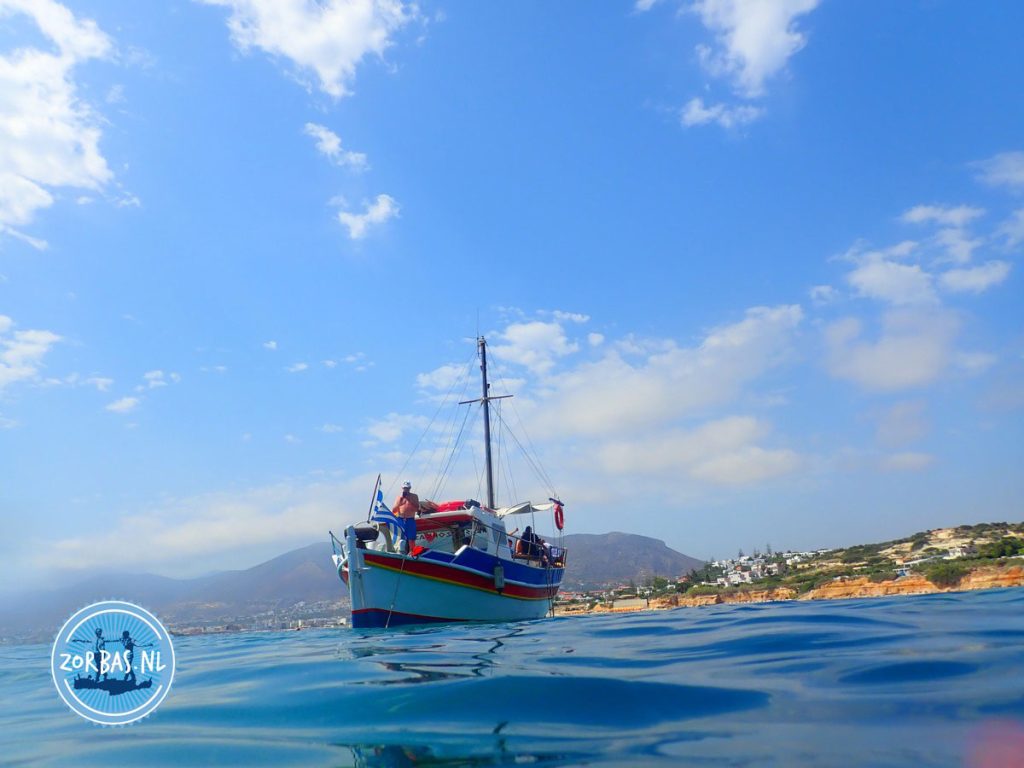
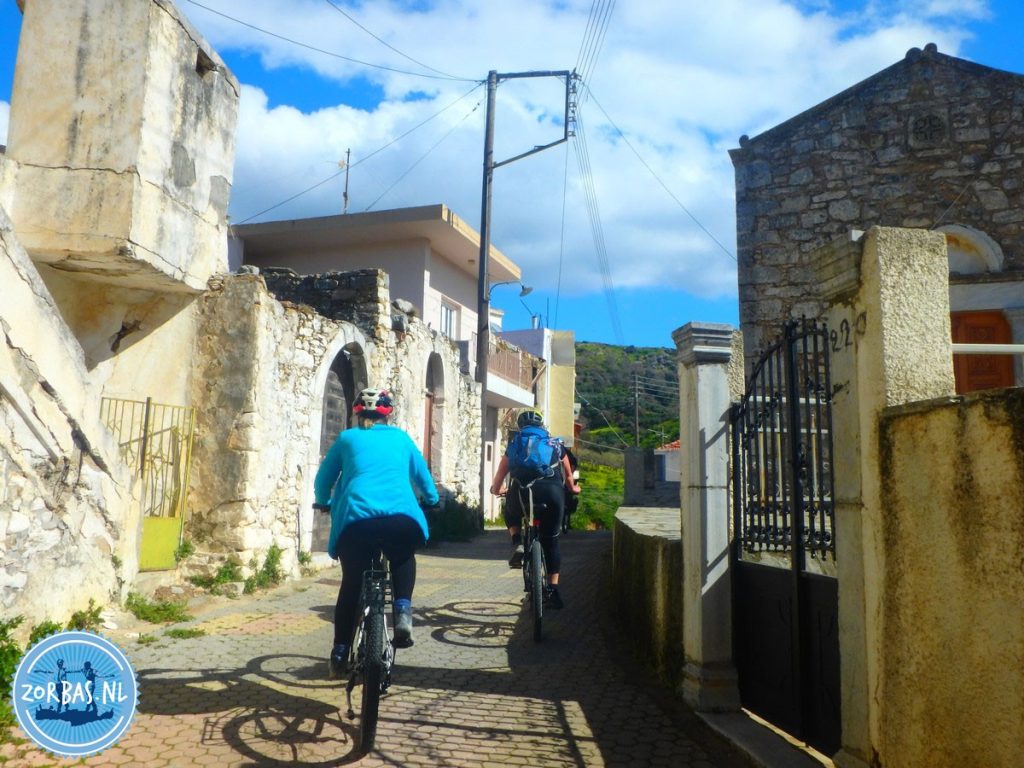
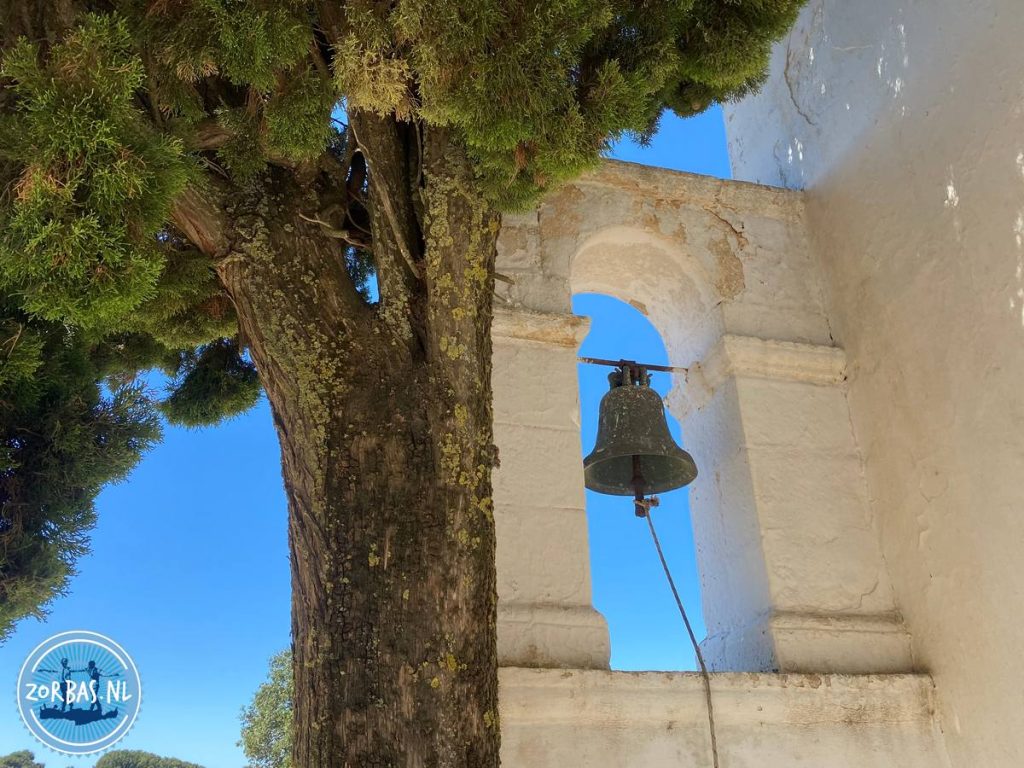
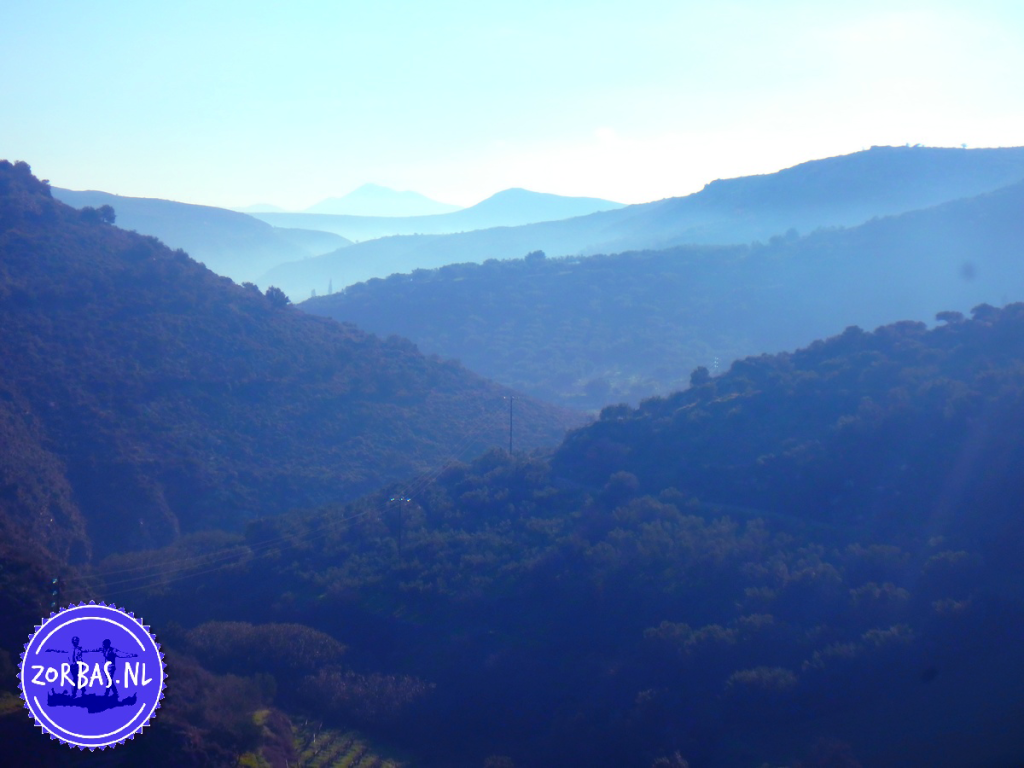
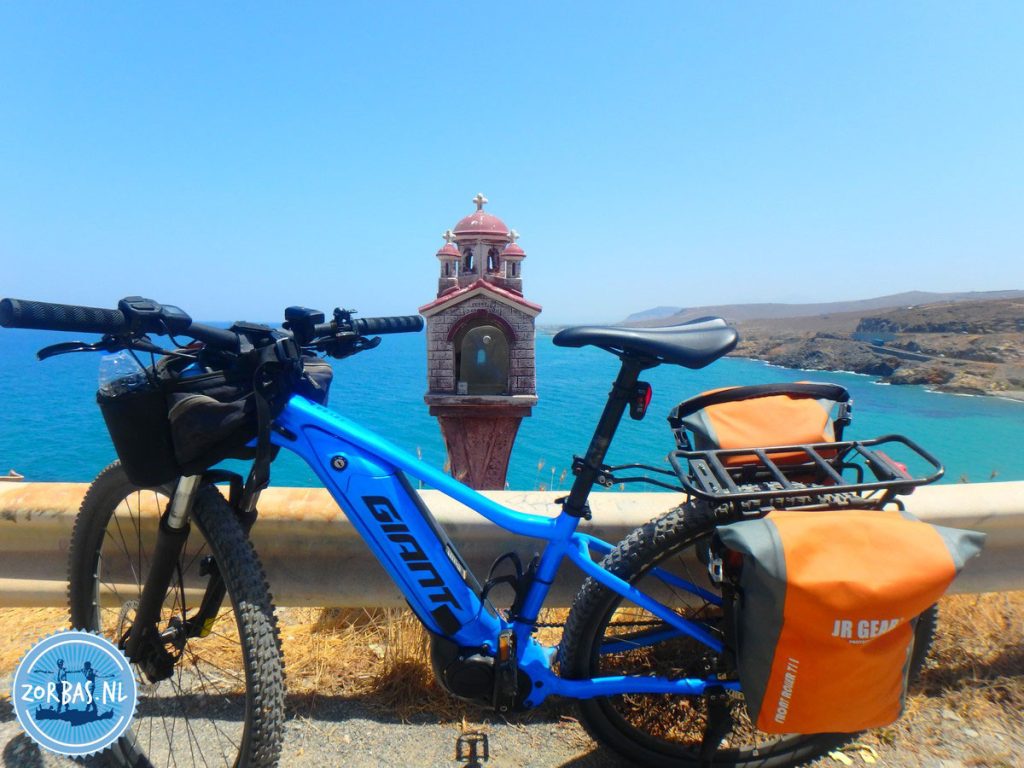
More information
Our apartments Zorbas Island are located in Kokkini Hani in the region of Heraklion. Its location is quiet and very central, which makes it easy to travel in all directions to explore the island. For the area of Kokkini Hani we wrote a seperate page to give you more detailed information.
Holiday information
Holiday information Crete Zorbas Island: For renting apartments and holiday homes, all your excursions and cheap flights to Crete. If you are looking for apartment rental and accommodation on Crete, you have come to the right place. We have a variety of apartments, suitable for families, singles, couples or more people travelling together. We can help you to organize your holiday on Crete Greece to your wishes. An active outdoor vacation, active holidays, a beach holiday, or a combination of both we can all realize for you.
In case you like more information, please send an email to zorbasisland@gmail.com
Tourist information Crete
